Microsoft - MS-102: Microsoft 365 Administrator
Sample Questions
Question: 483
Measured Skill: Manage compliance by using Microsoft Purview (10–15%)
Note: This is a lab or performance-based testing (PBT) question. To answer, you will perform a set of tasks in a live environment. Some functionality (e.g. copy and paste) will not be possible by design. The right mouse button may not be able to be used. Scoring is based on the outcome of performing the tasks stated in the lab. It doesn't matter how you accomplish the goal.
You need to ensure that all email messages sent to a user named Adele Vance are retained for five years, and then automatically deleted. The solution must NOT affect data stored in other locations.
To complete this task, sign in to the appropriate admin center.
(This question has to be solved in a lab environment. Click on Solution to see a valid example solution. Answer "True" if you can solve the problem, otherwise select "False".)Correct answer: ASolution:
We need to create a retention policy using the Microsoft Purview portal.
Step 01: Sign in to the Microsoft Purview portal (https://purview.microsoft.com). Select the Data Lifecycle Management solution and browse to Policies > Retention policies. Click on + New retention policy.
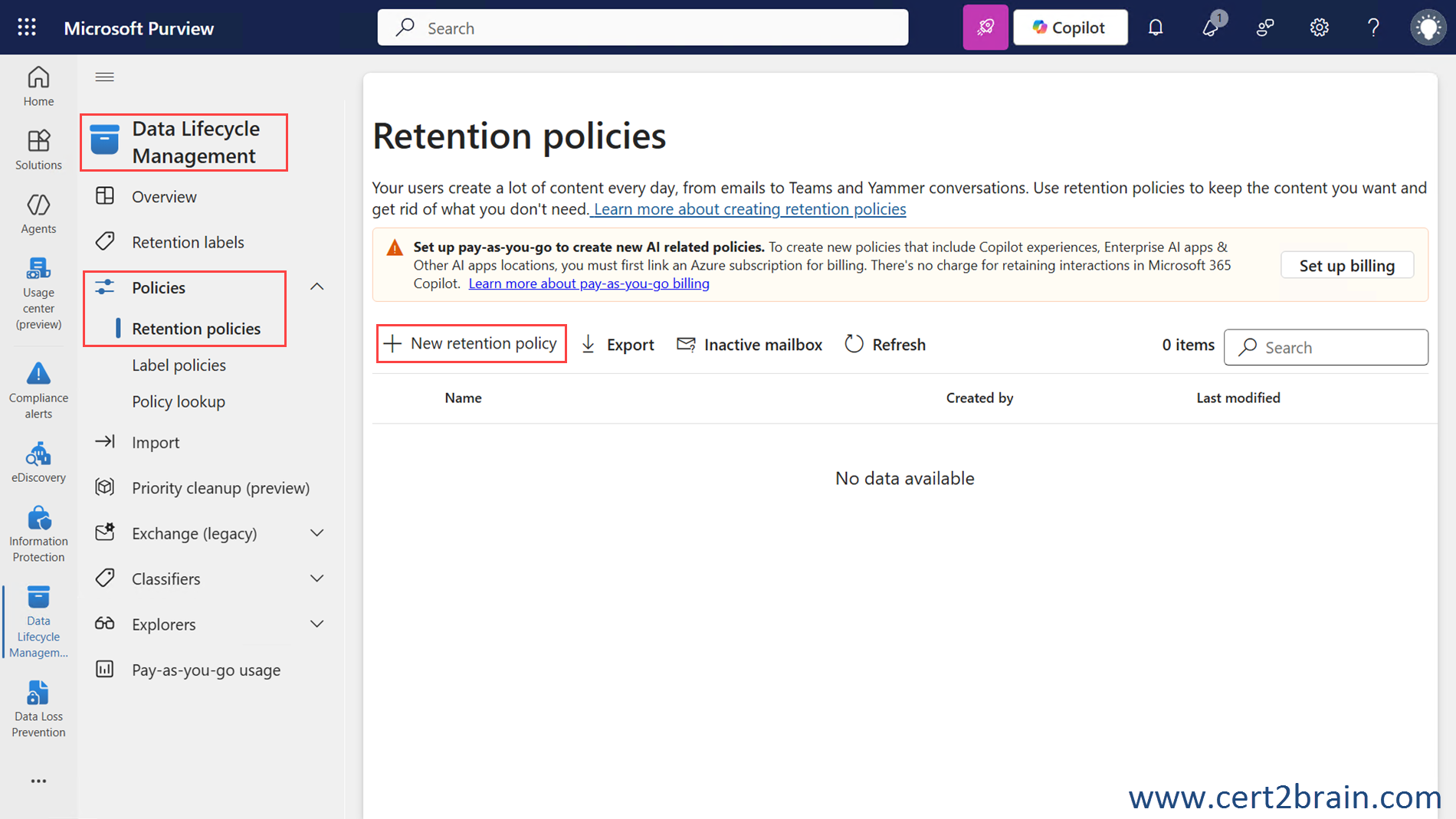
Step 02: Enter a name for the new policy and click Next.
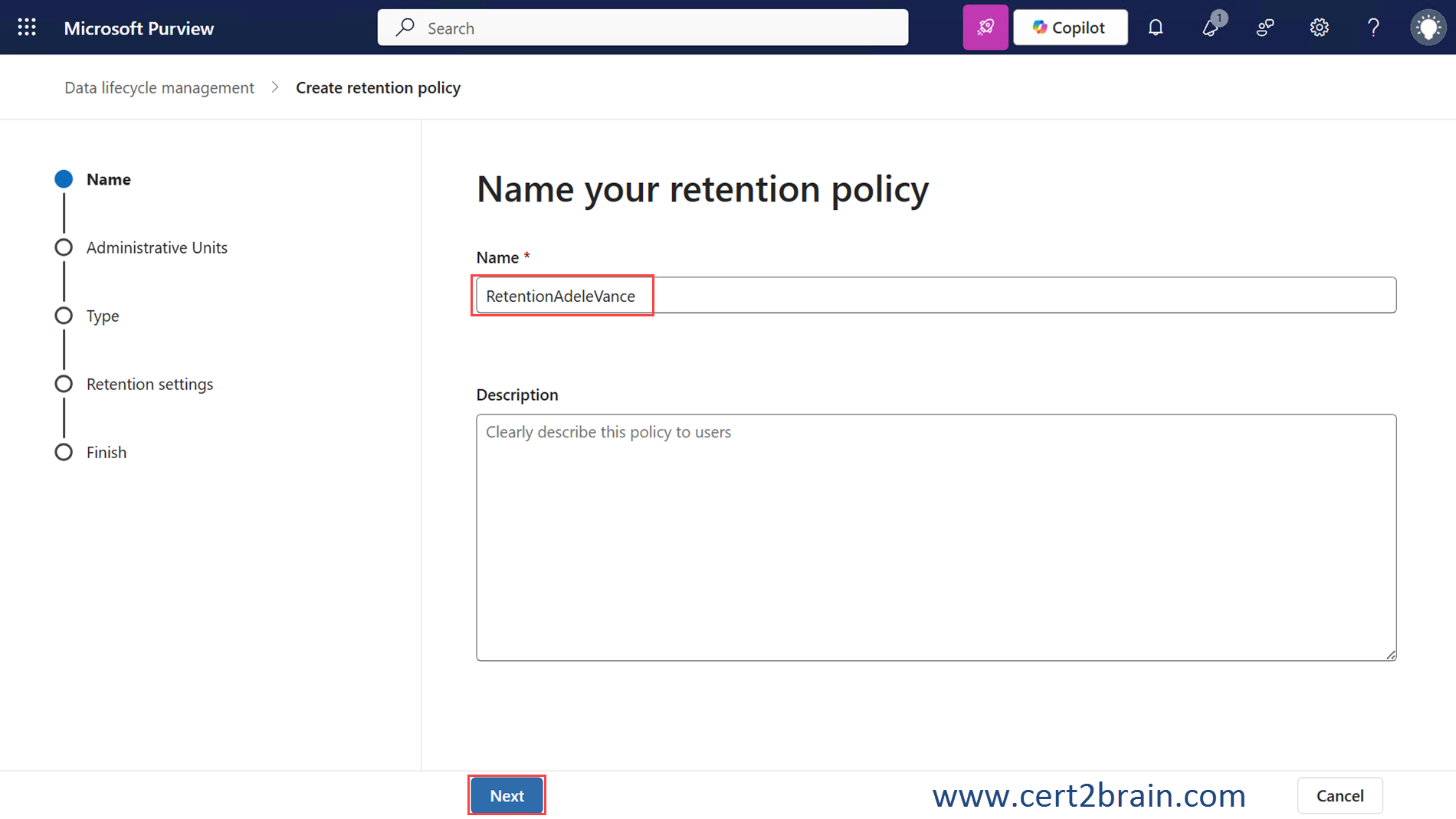
Step 03: Click Next.
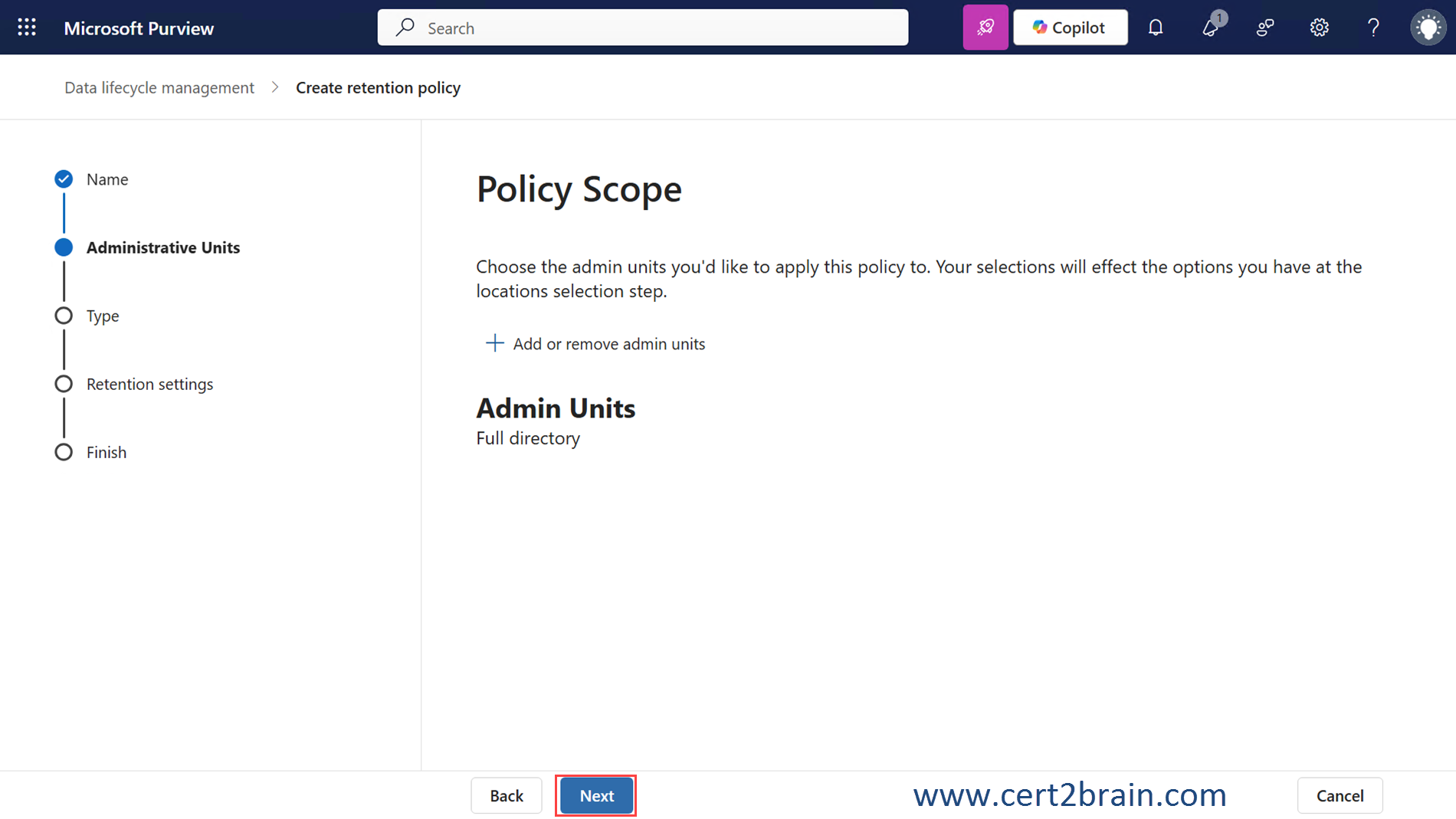
Step 04: Select Static as the type of retention policy to create. Then click Next.
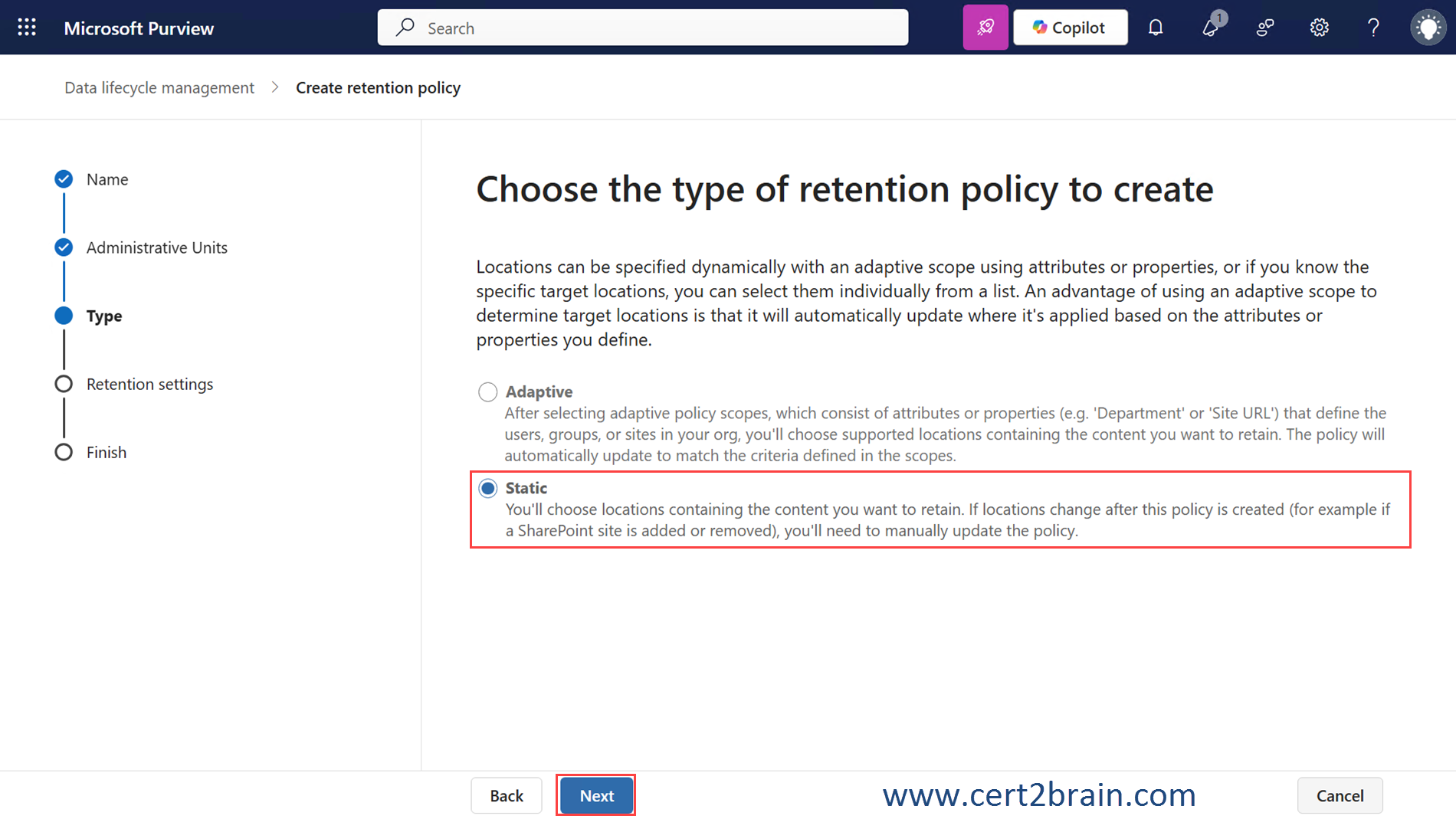
Step 05: Ensure that only the Exchange mailboxes location is selected. Then click the Edit link as shown below.
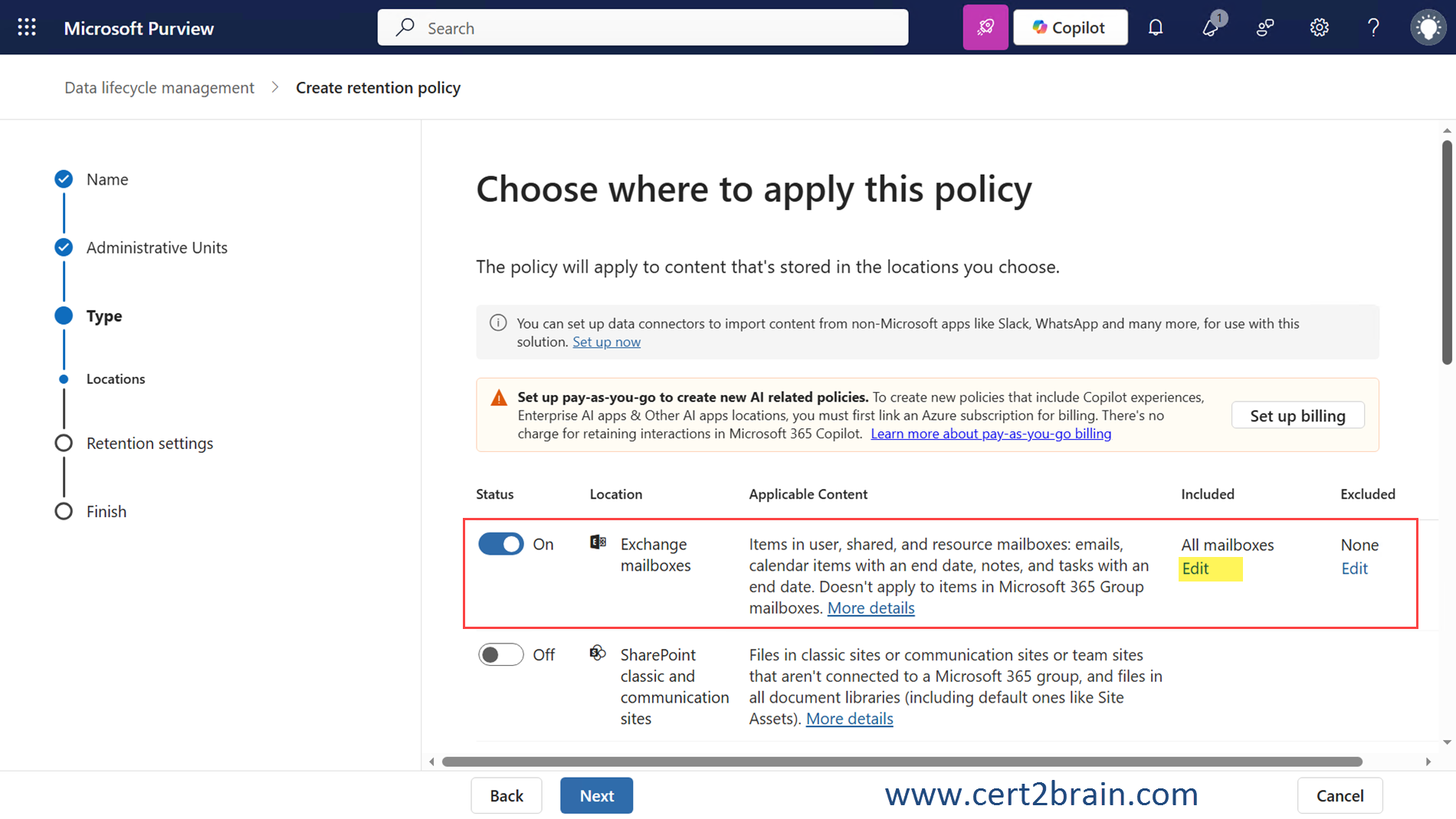
Step 06: Make sure, only Adele Vance is included in the policy.
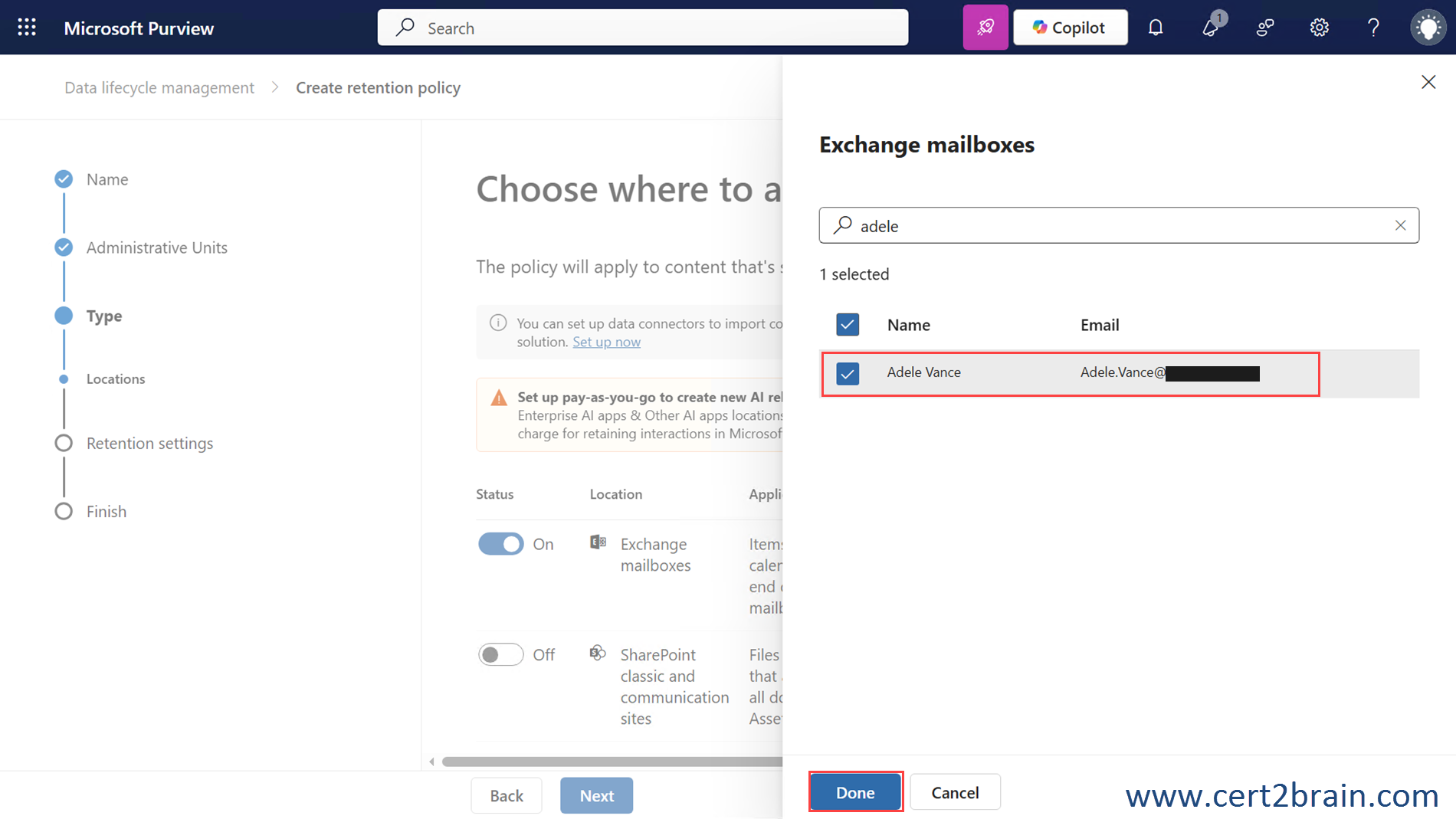
Step 07: Click Next.
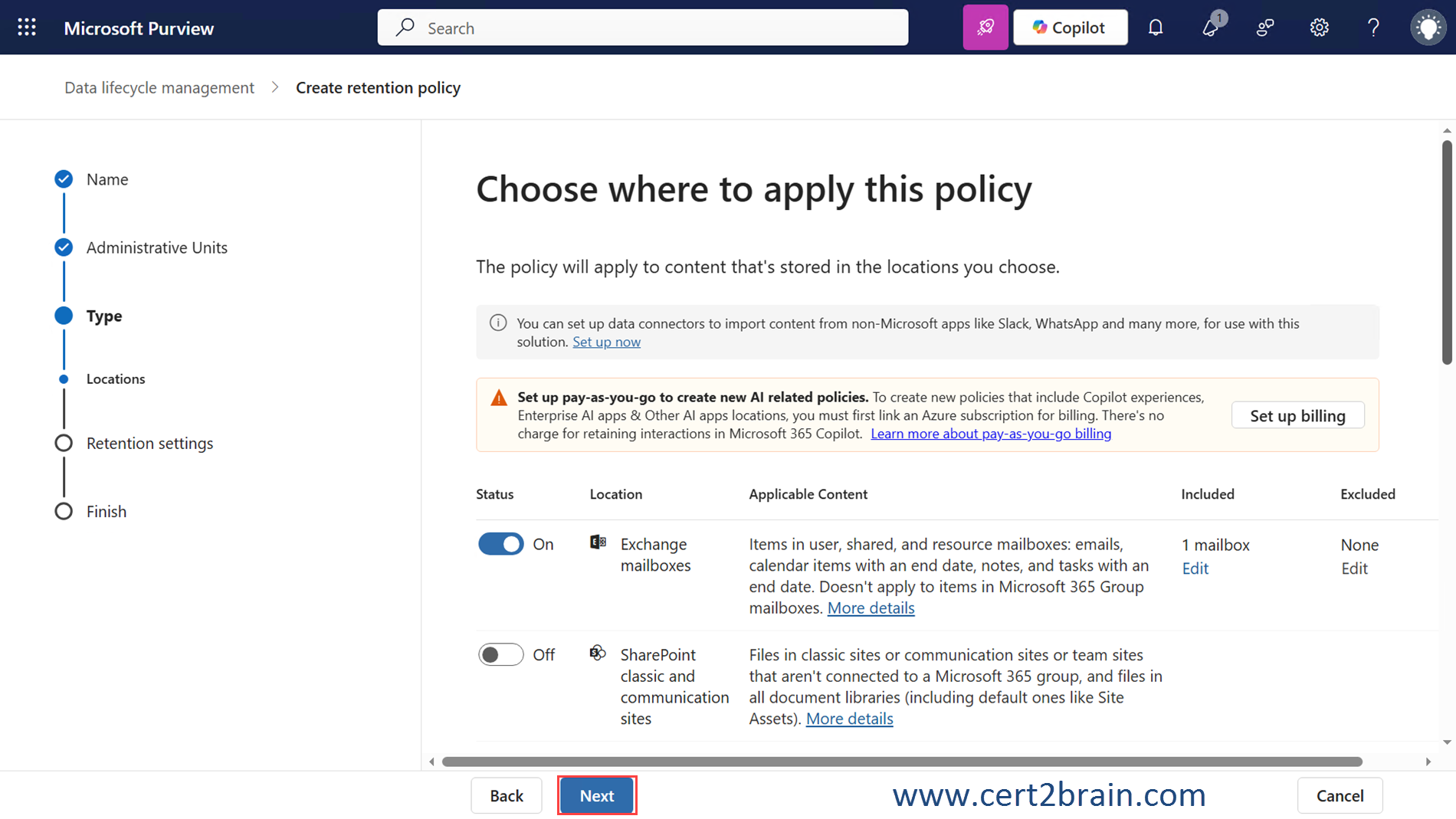
Step 08: Configure the policy to retain items for 5 years and to delete them at the end of the retention period. Then click Next.
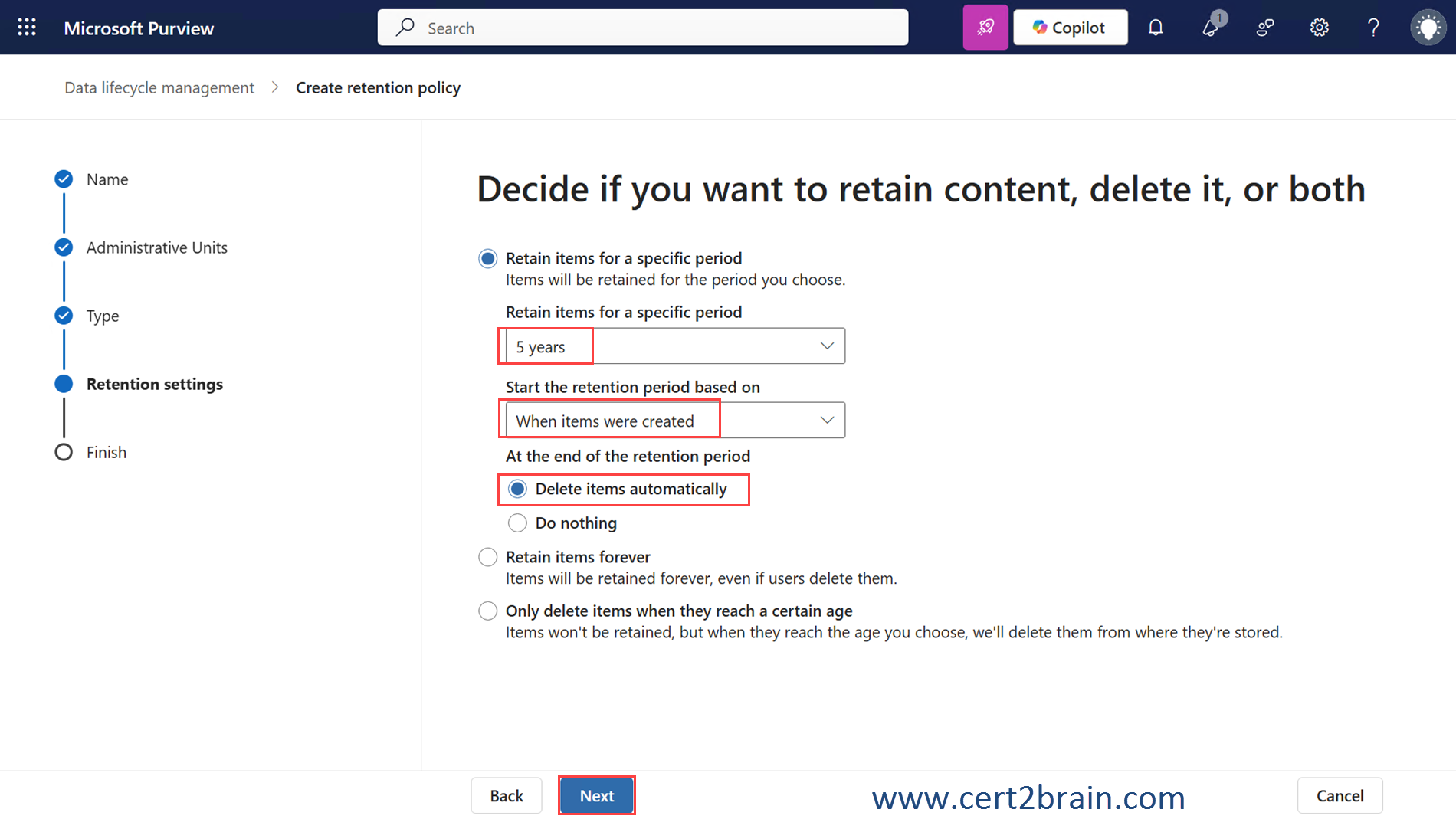
Step 09: Click Submit to create the new retention policy.
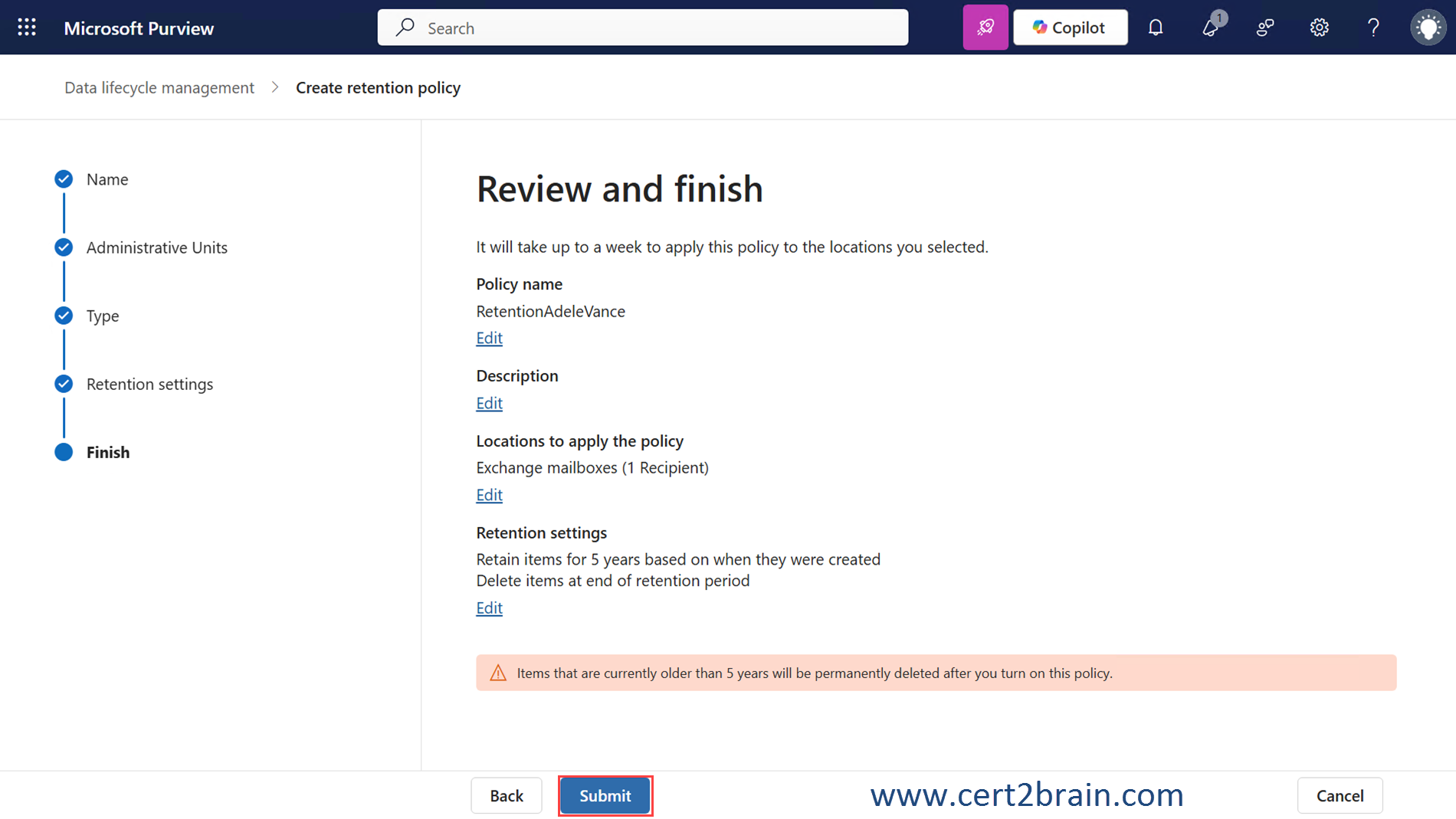
Step 10: Click Done. The task is completed.
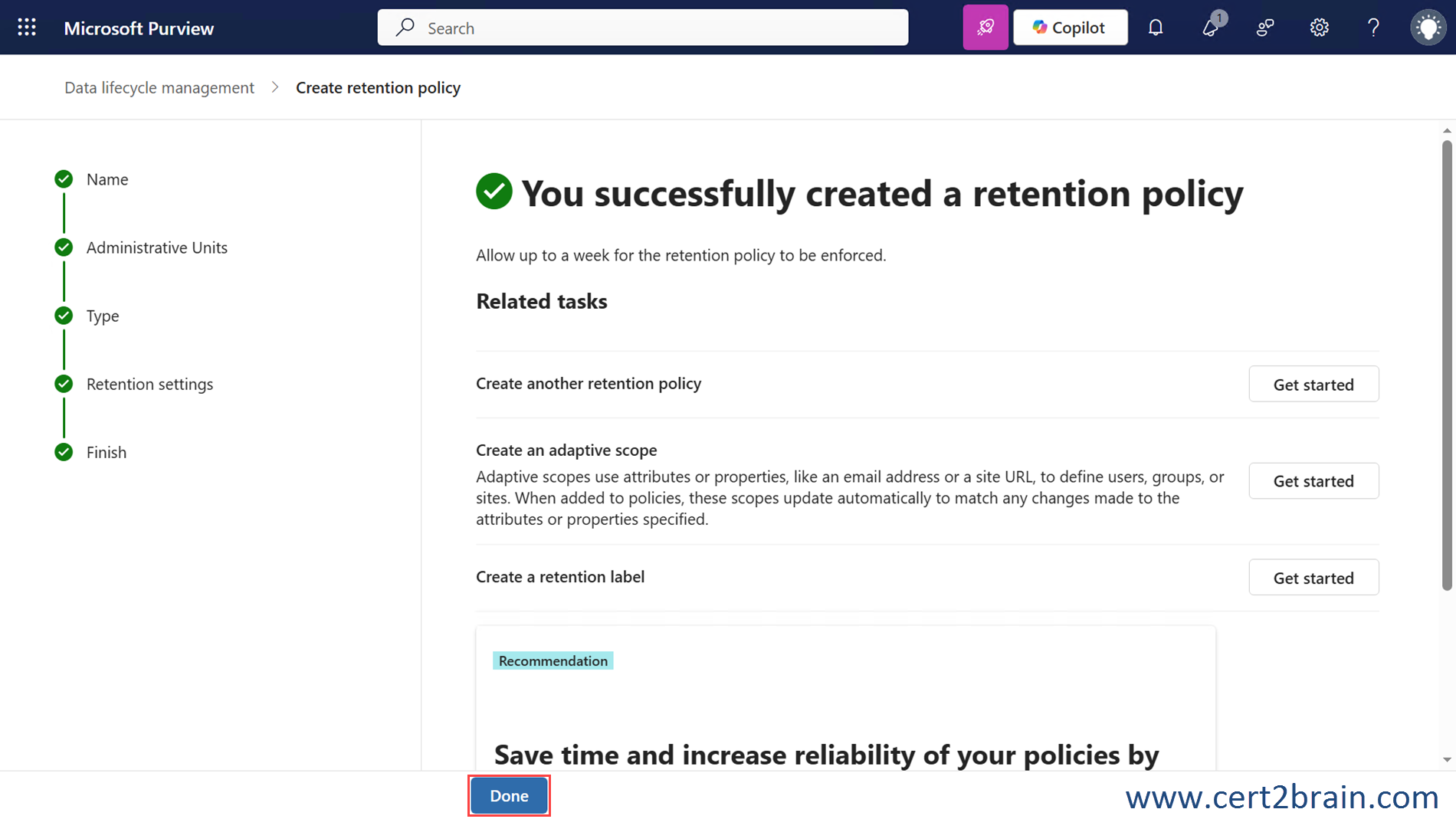
Reference: Create and configure retention policies
Question: 484
Measured Skill: Manage compliance by using Microsoft Purview (10–15%)
Note: This is a lab or performance-based testing (PBT) question. To answer, you will perform a set of tasks in a live environment. Some functionality (e.g. copy and paste) will not be possible by design. The right mouse button may not be able to be used. Scoring is based on the outcome of performing the tasks stated in the lab. It doesn't matter how you accomplish the goal.
You need to ensure that users cannot access files that contain credit card numbers and are stored on the Contoso Landings Microsoft SharePoint Online site. The solution must NOT affect files stored in other locations.
To complete this task, sign in to the appropriate admin center.
(This question has to be solved in a lab environment. Click on Solution to see a valid example solution. Answer "True" if you can solve the problem, otherwise select "False".)Correct answer: ASolution:
We need to create a Data Loss Prevention (DLP) policy using the Microsoft Purview portal.
Step 01: Sign in to the Microsoft Purview portal (https://purview.microsoft.com). Select the Data Loss Prevention solution and browse to Policies. Click on + Create policy.
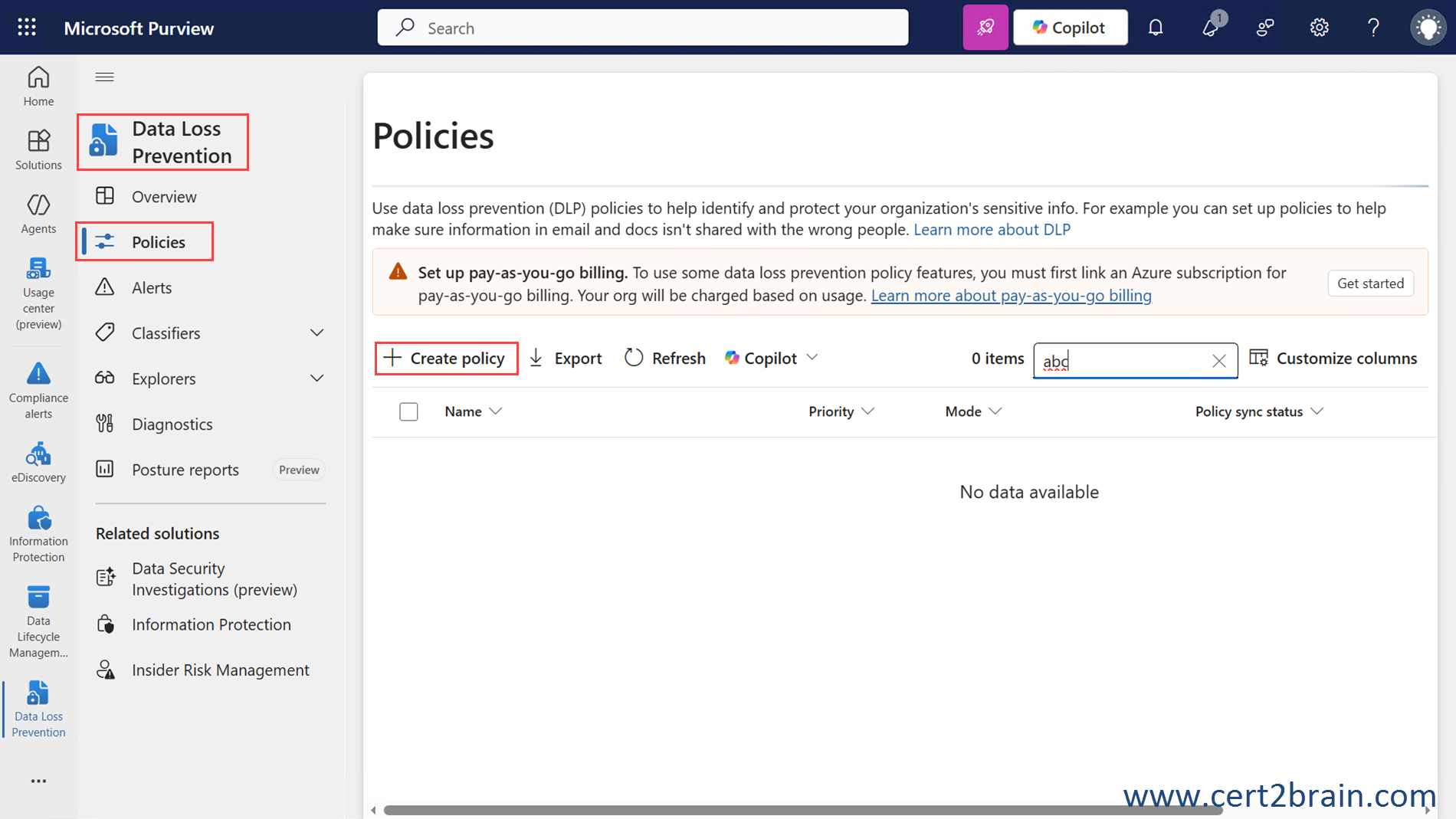
Step 02: Select Enterprise applications & devices.
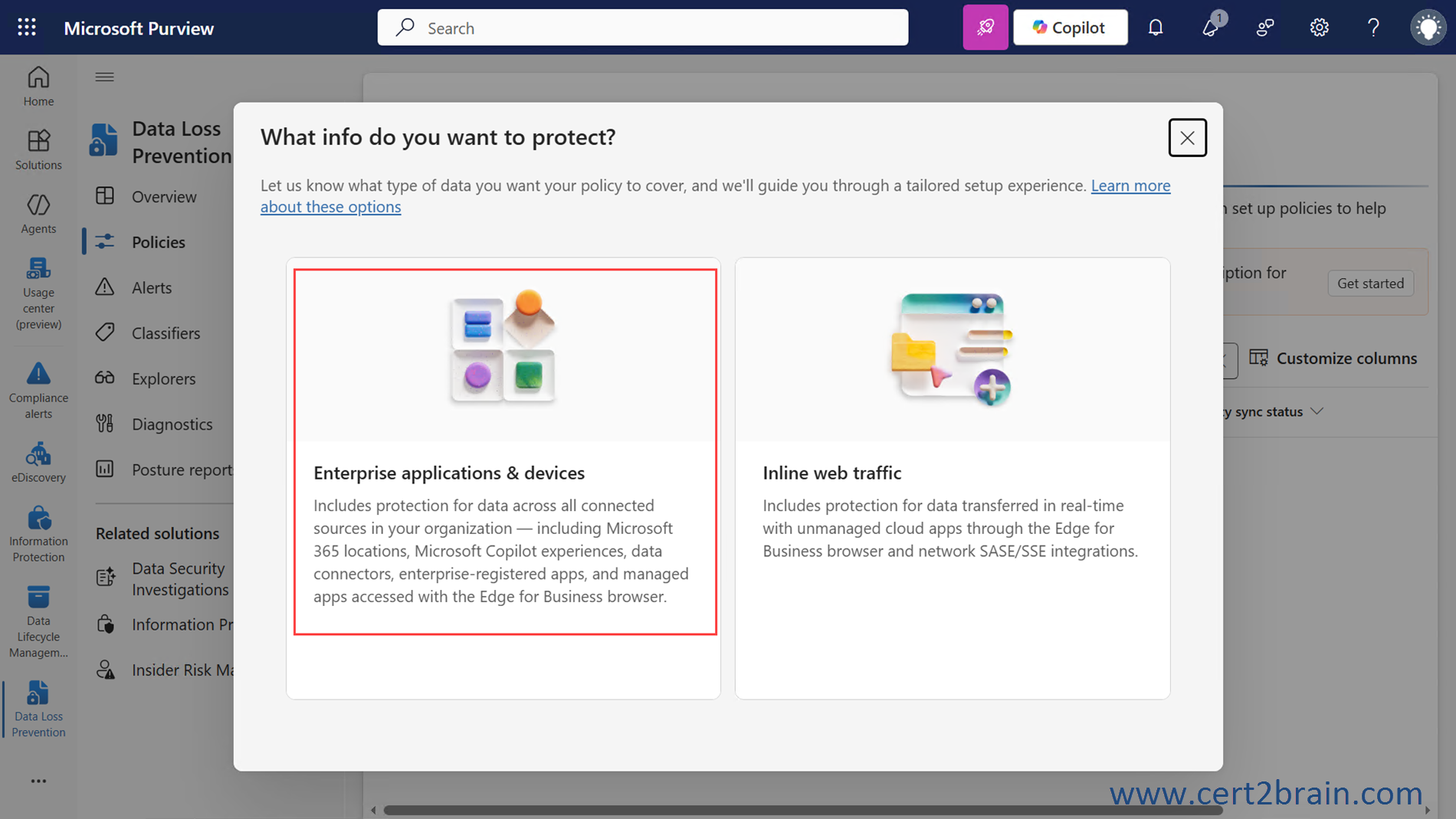
Step 03: Choose to create a custom policy. Then click Next.
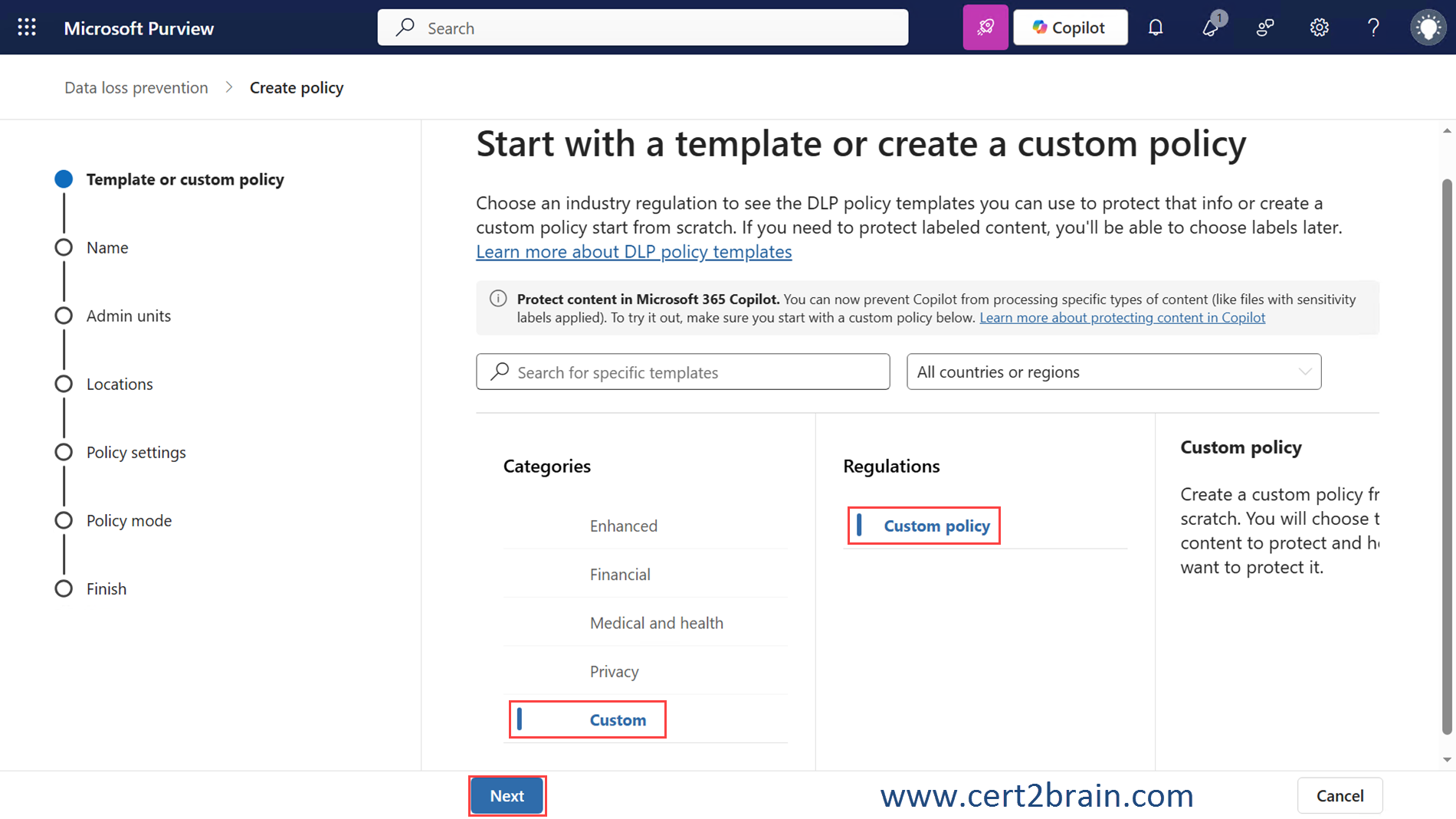
Step 04: Enter a name for the new policy. Then click Next.
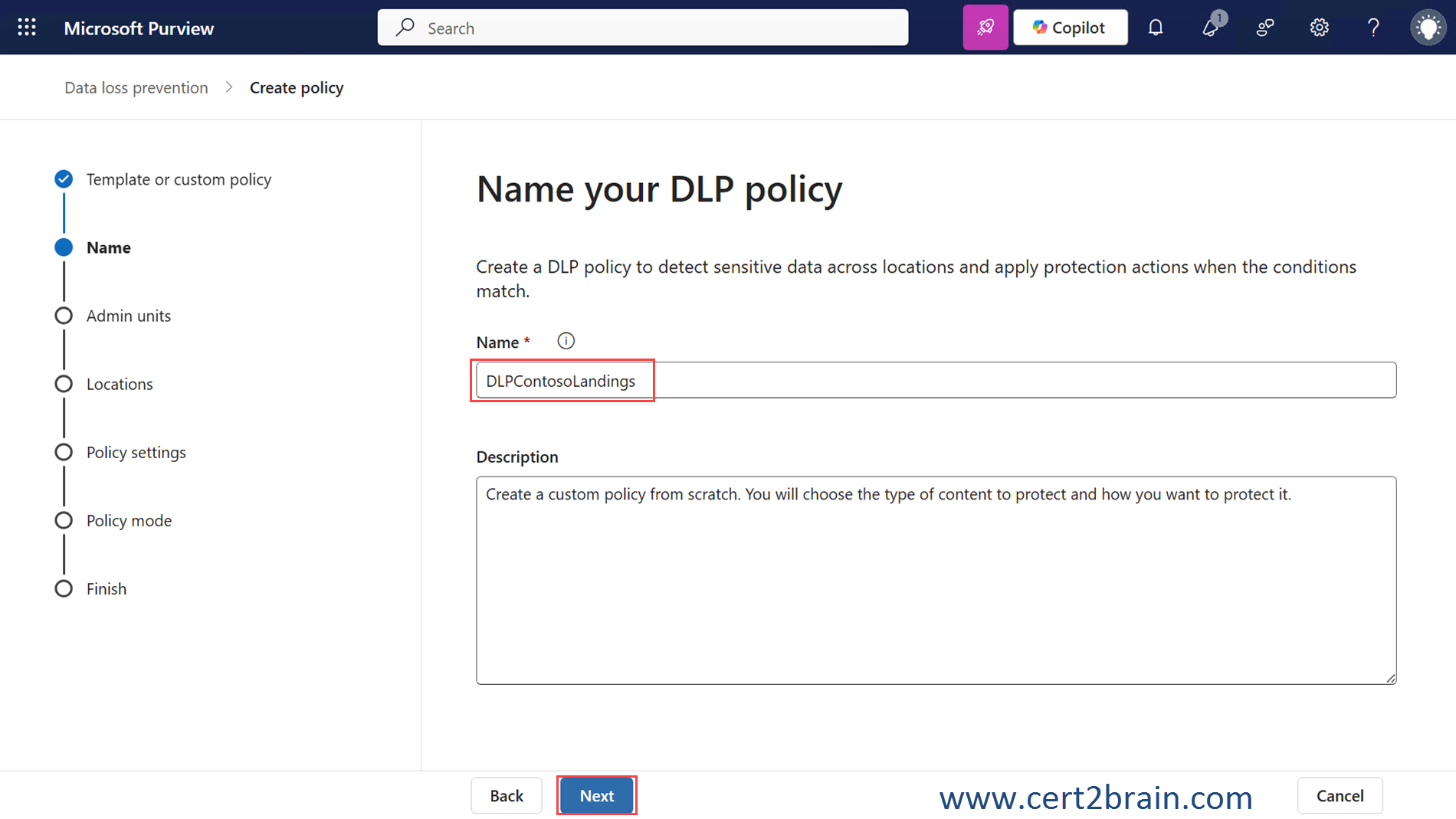
Step 05: Click Next.
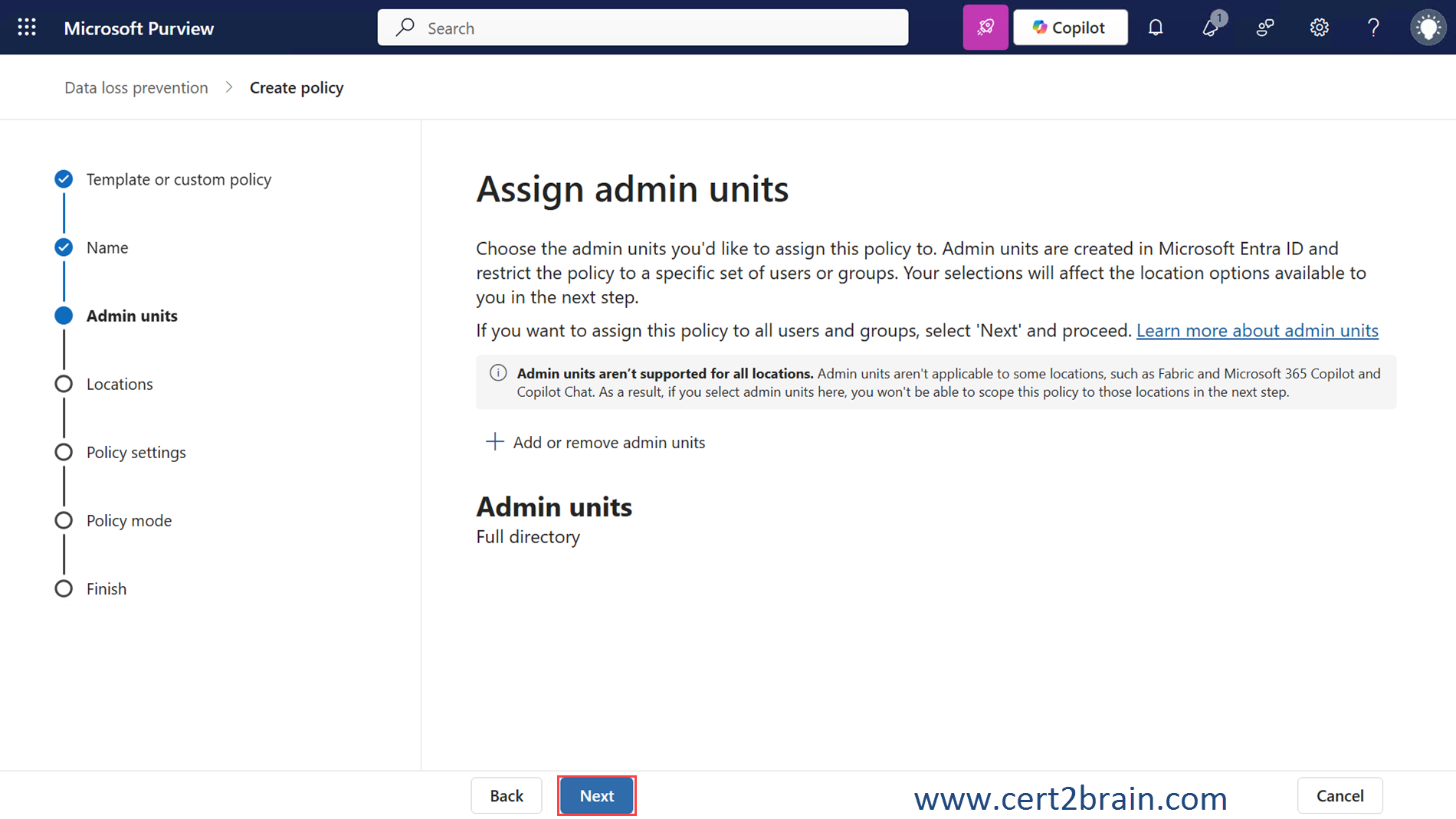
Step 06: Configure the Locations to include only the Contoso Landings Microsoft SharePoint Online site. Then click Next.
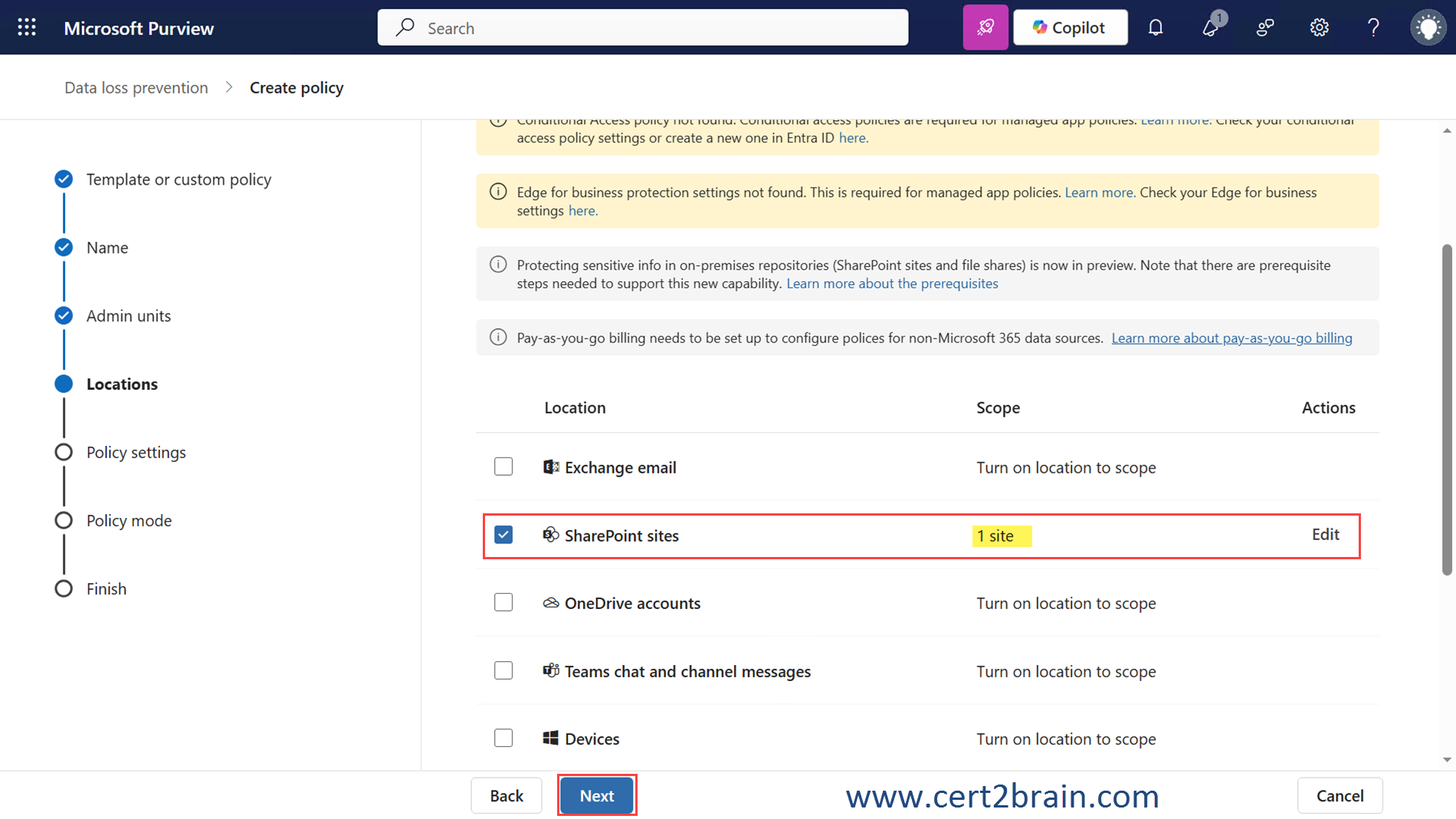
Step 07: Click Next.
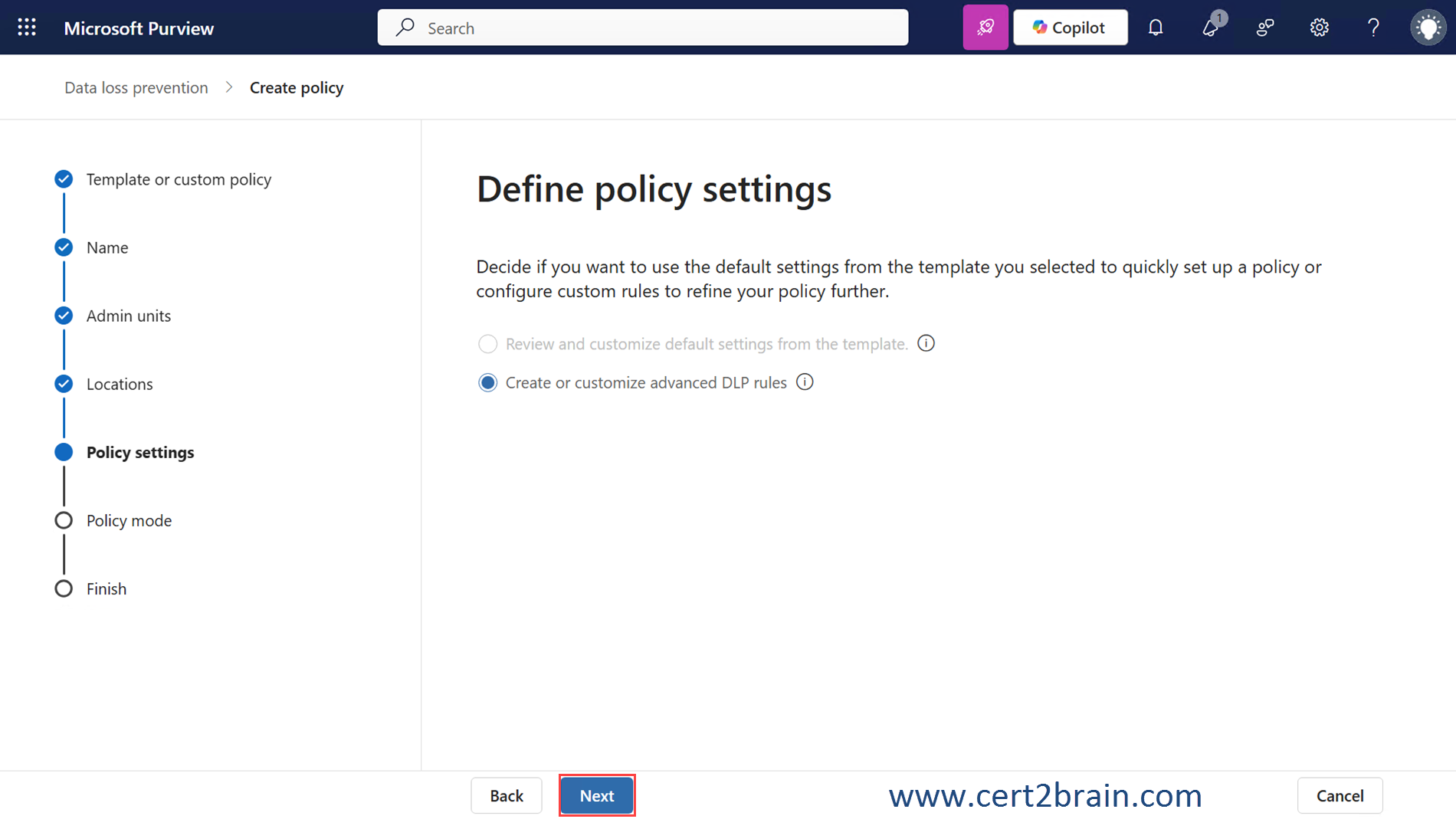
Step 08: Click + Create rule.
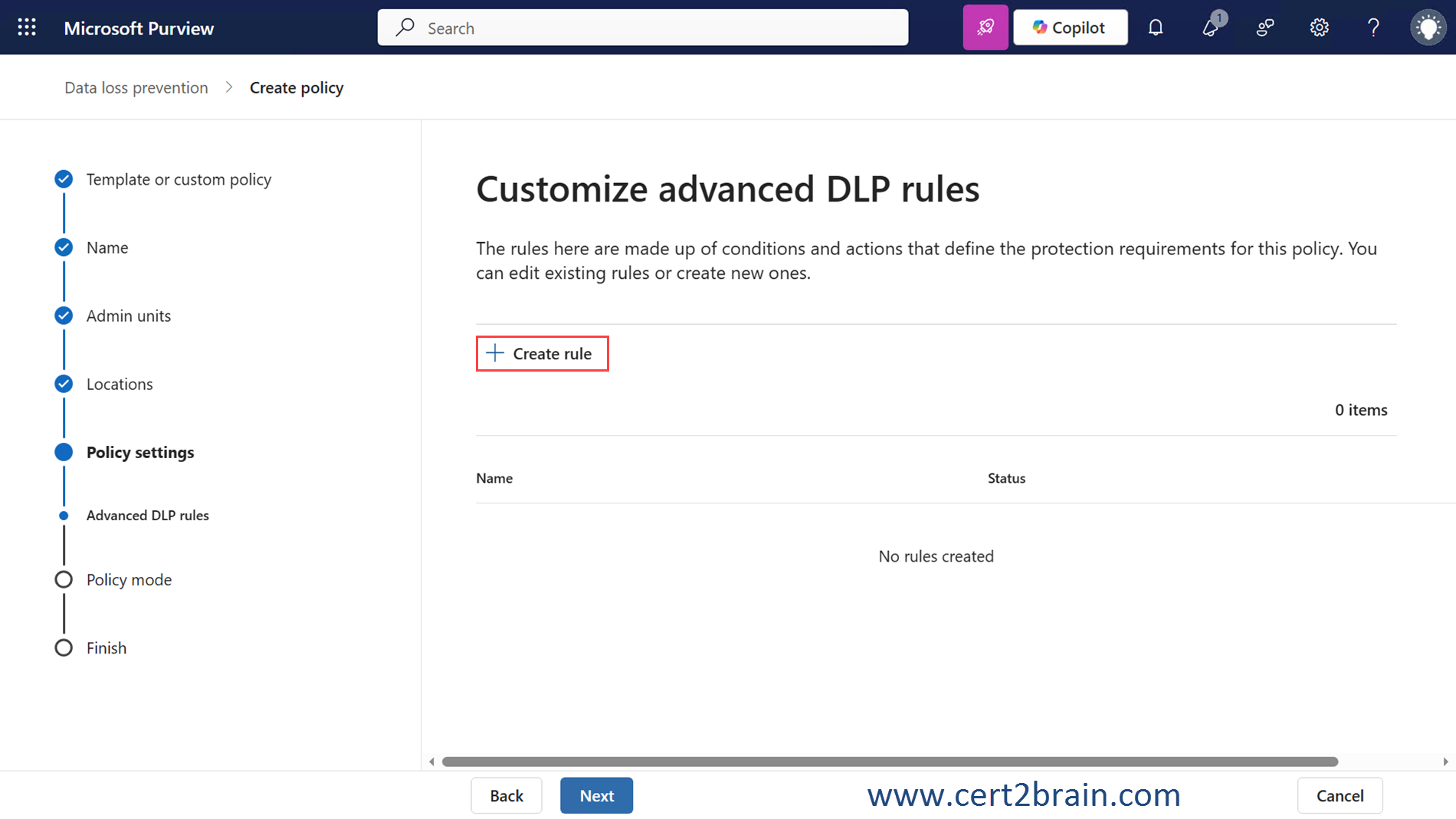
Step 09: Enter a name for the new rule. Configure the Content contains condition to match Credit Card Numbers. Configure the Actions to block everyone (For files in SharePoint, OneDrive, and teams, only the owner, last modifier, and site admin will have access). Then click Save.
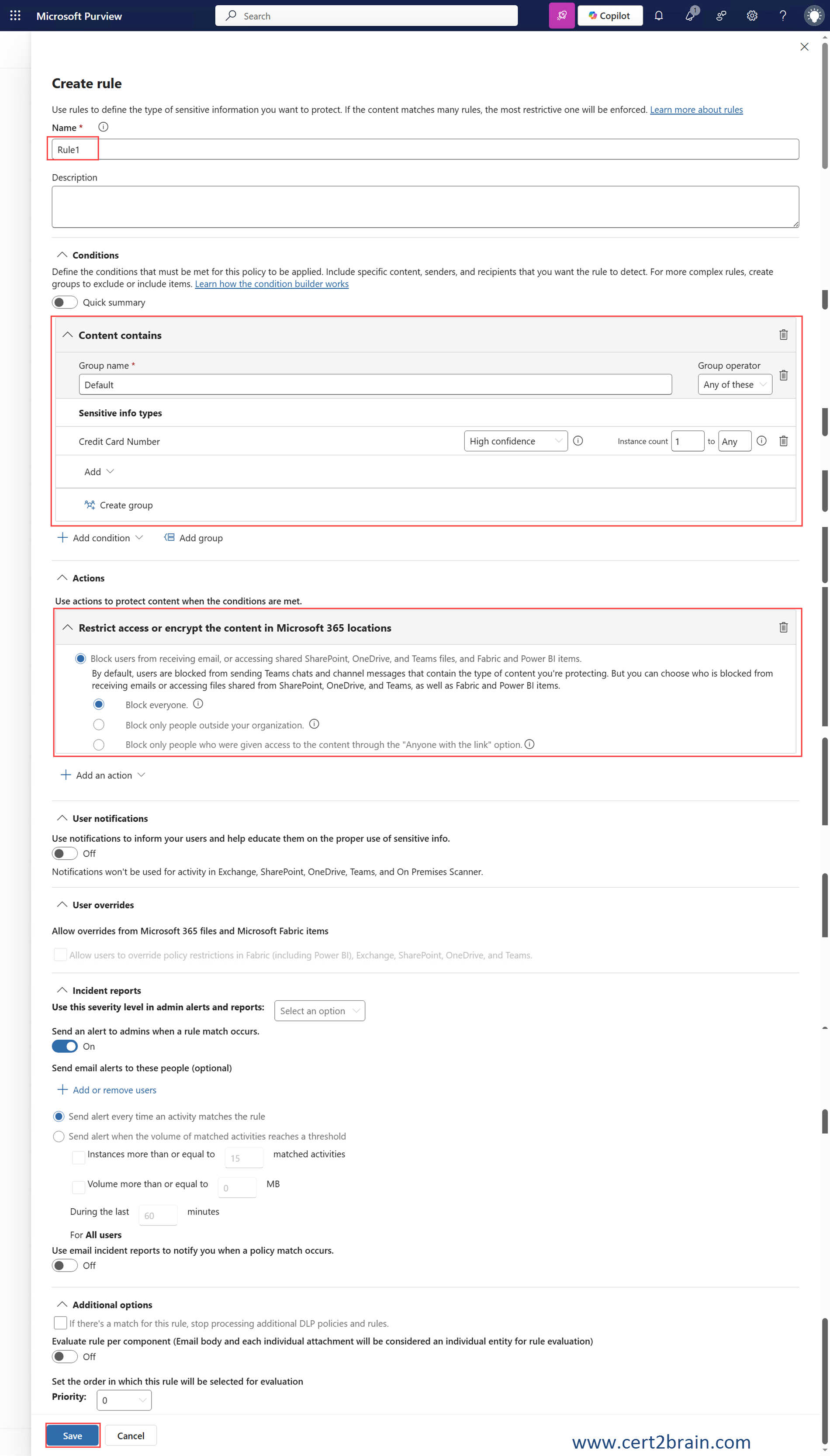
Step 10: Click Next.
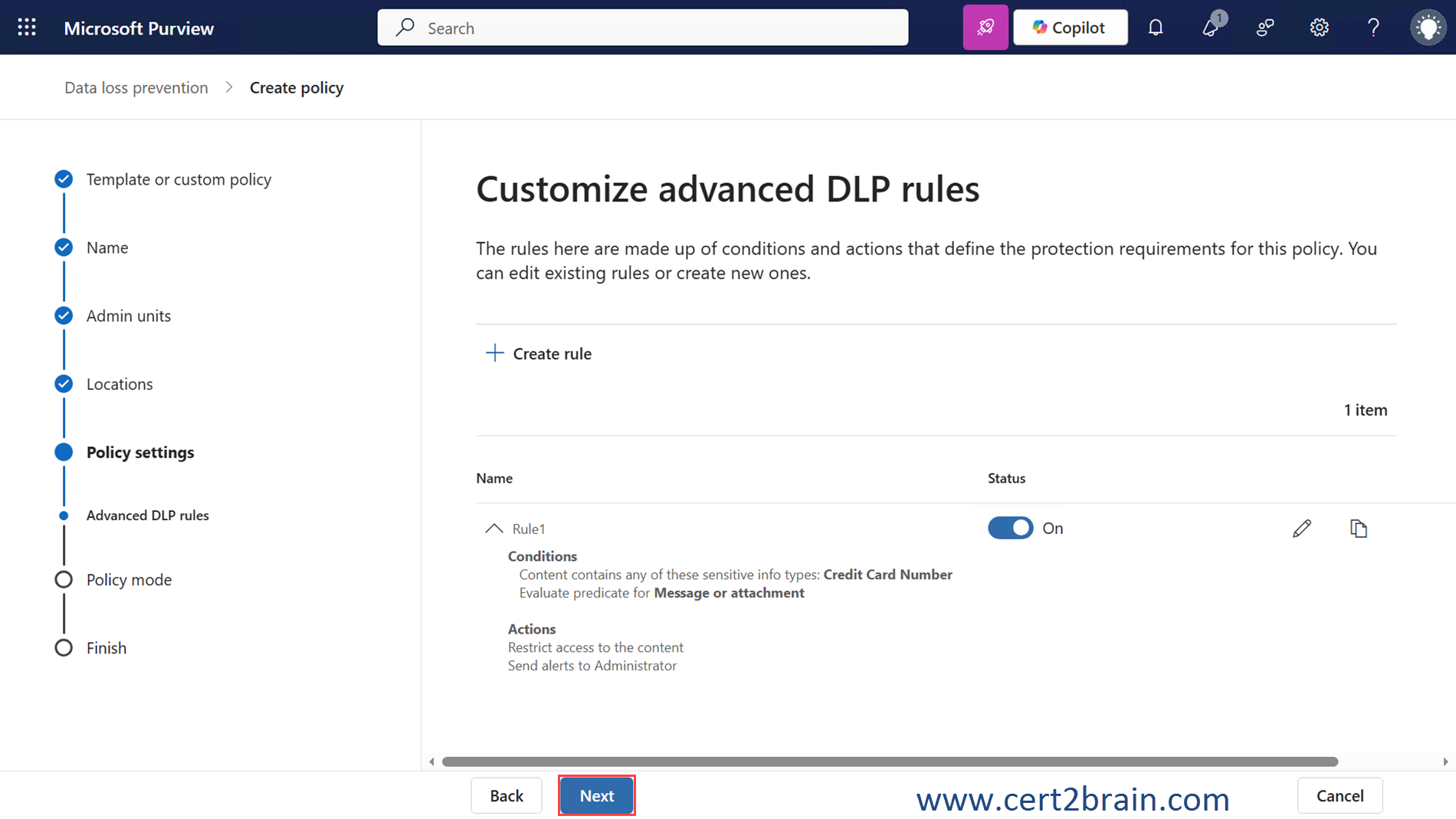
Step 11: Select Turn the policy on immediately. Then click Next.
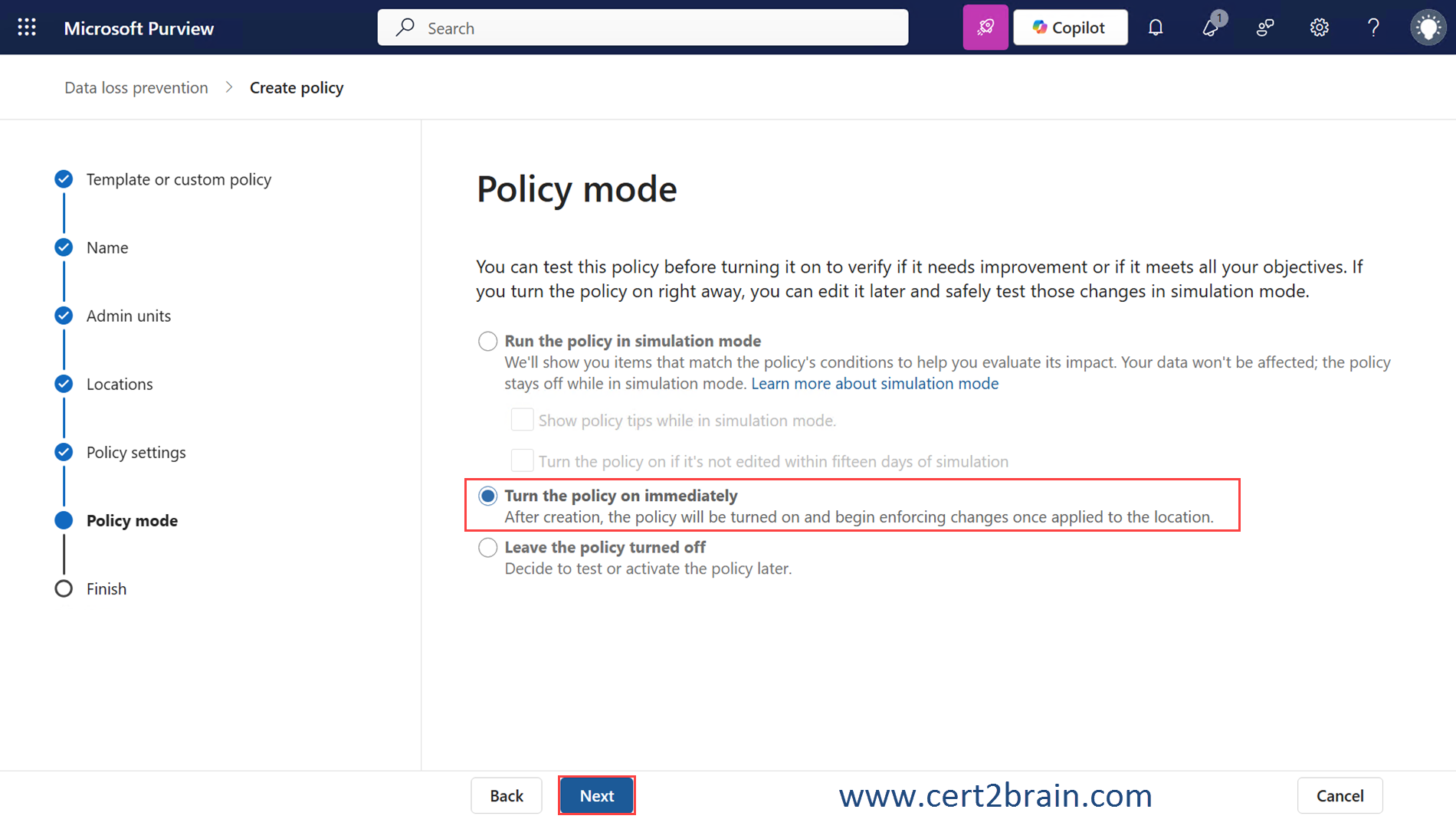
Step 12: Click Submit to create the policy.
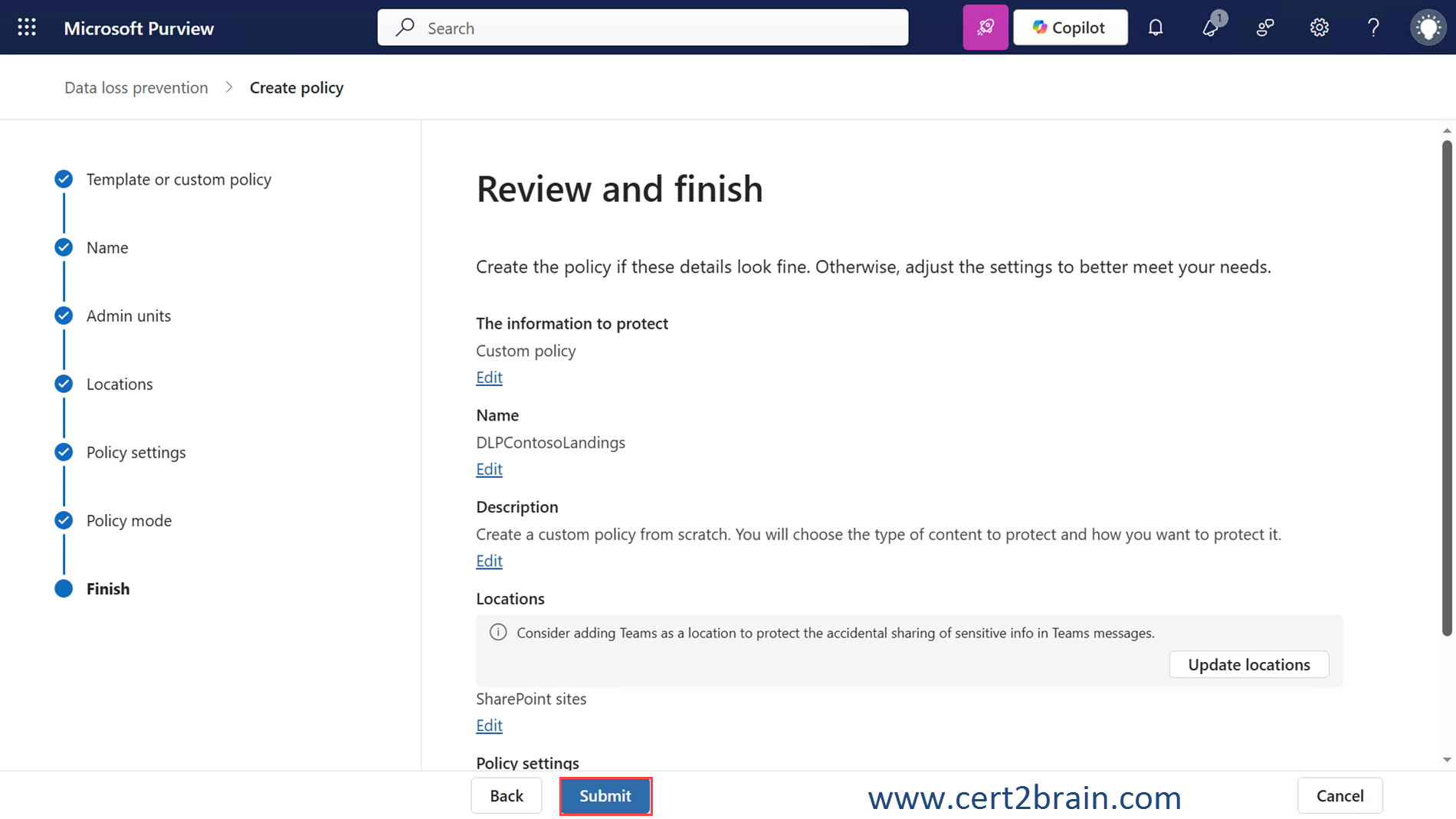
Step 13: Click Done. The task is completed.
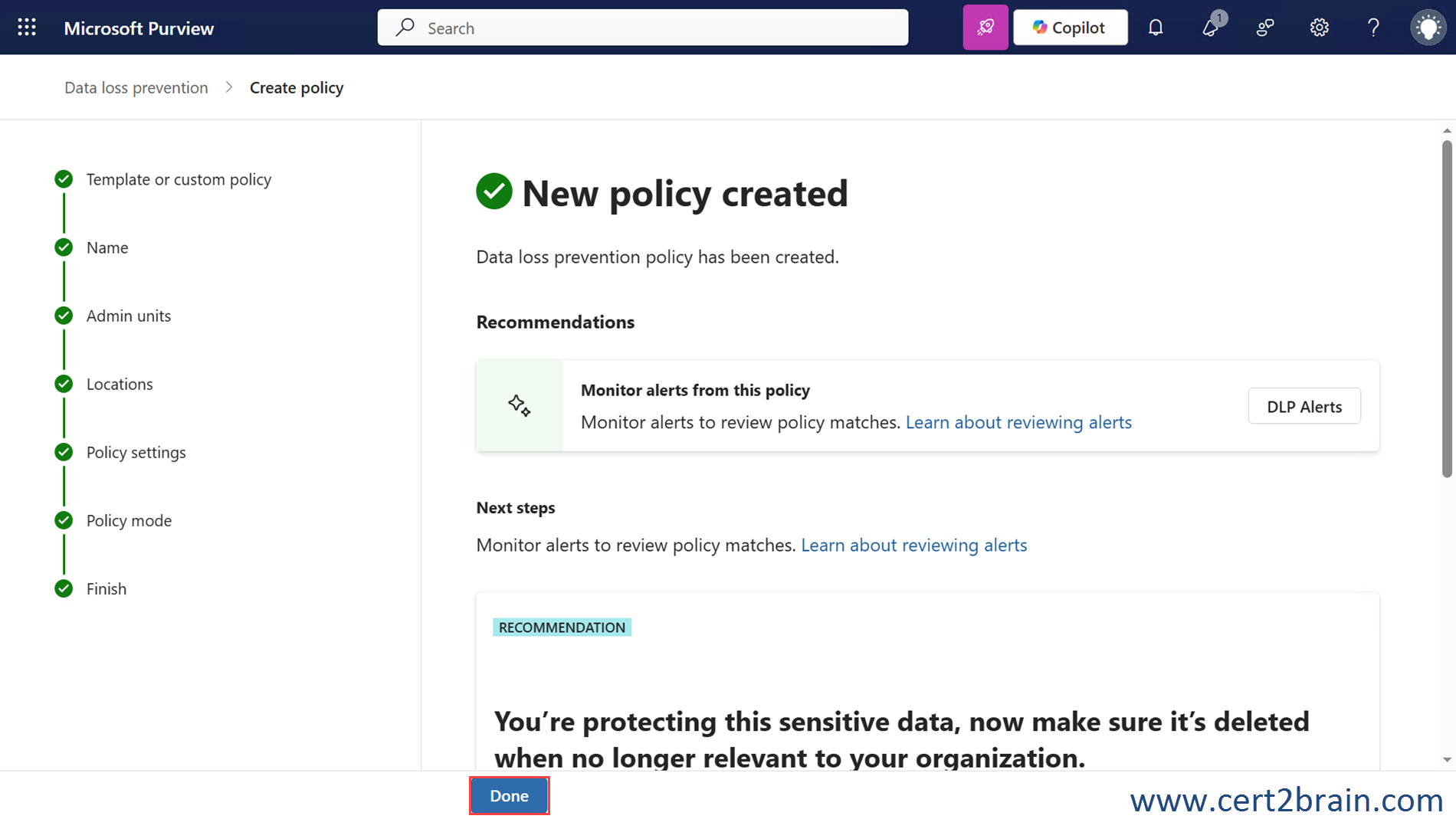
Reference: Create and deploy data loss prevention policies
Question: 485
Measured Skill: Implement and manage Microsoft Entra identity and access (25-30%)
Note: This is a lab or performance-based testing (PBT) question. To answer, you will perform a set of tasks in a live environment. Some functionality (e.g. copy and paste) will not be possible by design. The right mouse button may not be able to be used. Scoring is based on the outcome of performing the tasks stated in the lab. It doesn't matter how you accomplish the goal.
Your company recently partnered with another company named Contoso, Ltd.
You need to invite an external user named user1@contoso.com to your organization.
To complete this task, sign in to the appropriate admin center.
(This question has to be solved in a lab environment. Click on Solution to see a valid example solution. Answer "True" if you can solve the problem, otherwise select "False".)Correct answer: ASolution:
We need to send a guest user invitation using the Microsoft Entra admin center.
Step 01: Sign in to the Microsoft Entra admin center (https://entra.microsoft.com). Browse to Entra ID > Users. Expand + New user and click on Invite external user.
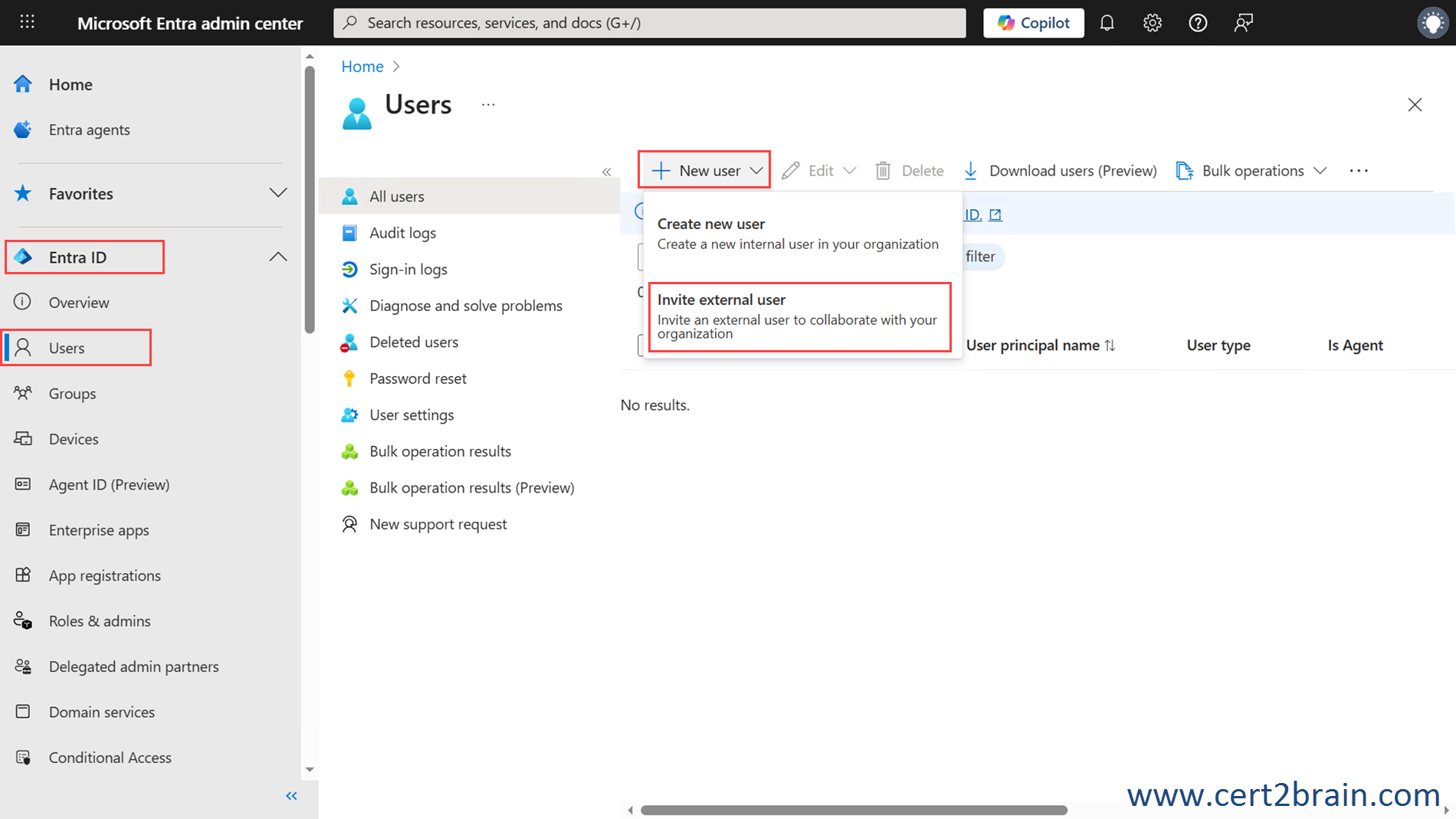
Step 02: Enter at least the email address of the external user. Then click Review + invite
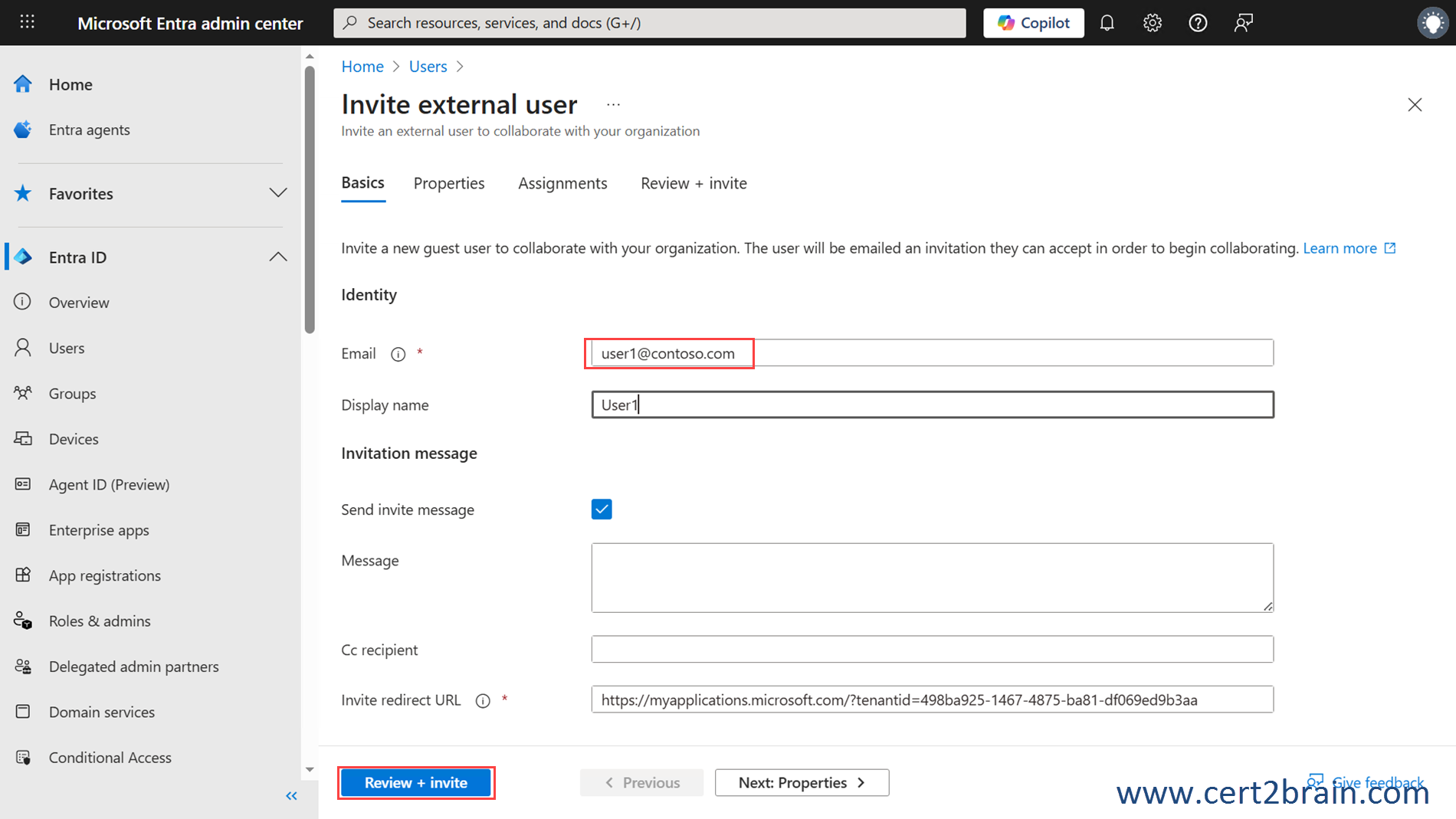
Step 03: Click Invite to invite the user. The task is completed.
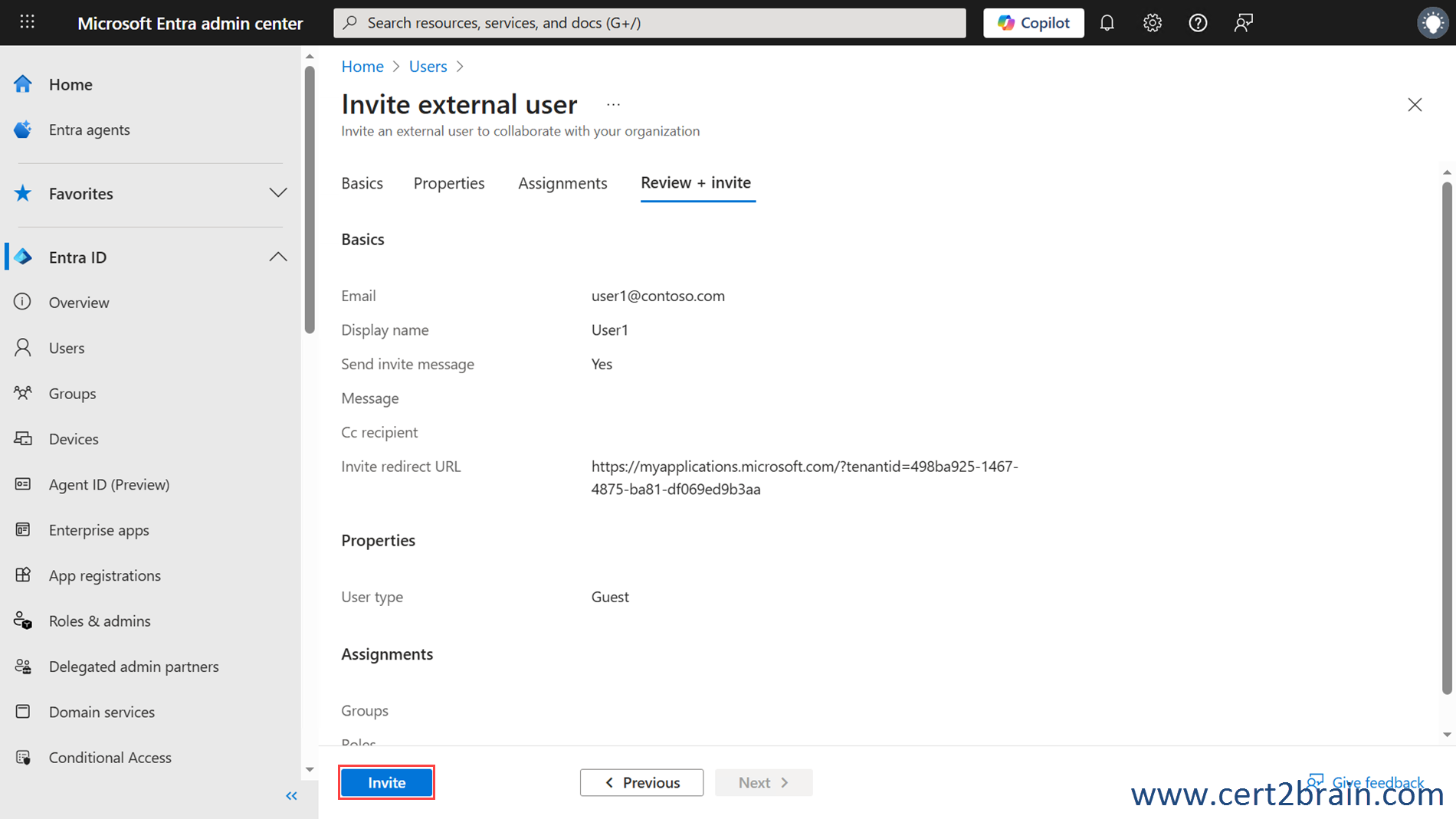
Step 04: Note that by sending the invitation the guest account for user1@contoso.com has been created successfully and is ready to be used.
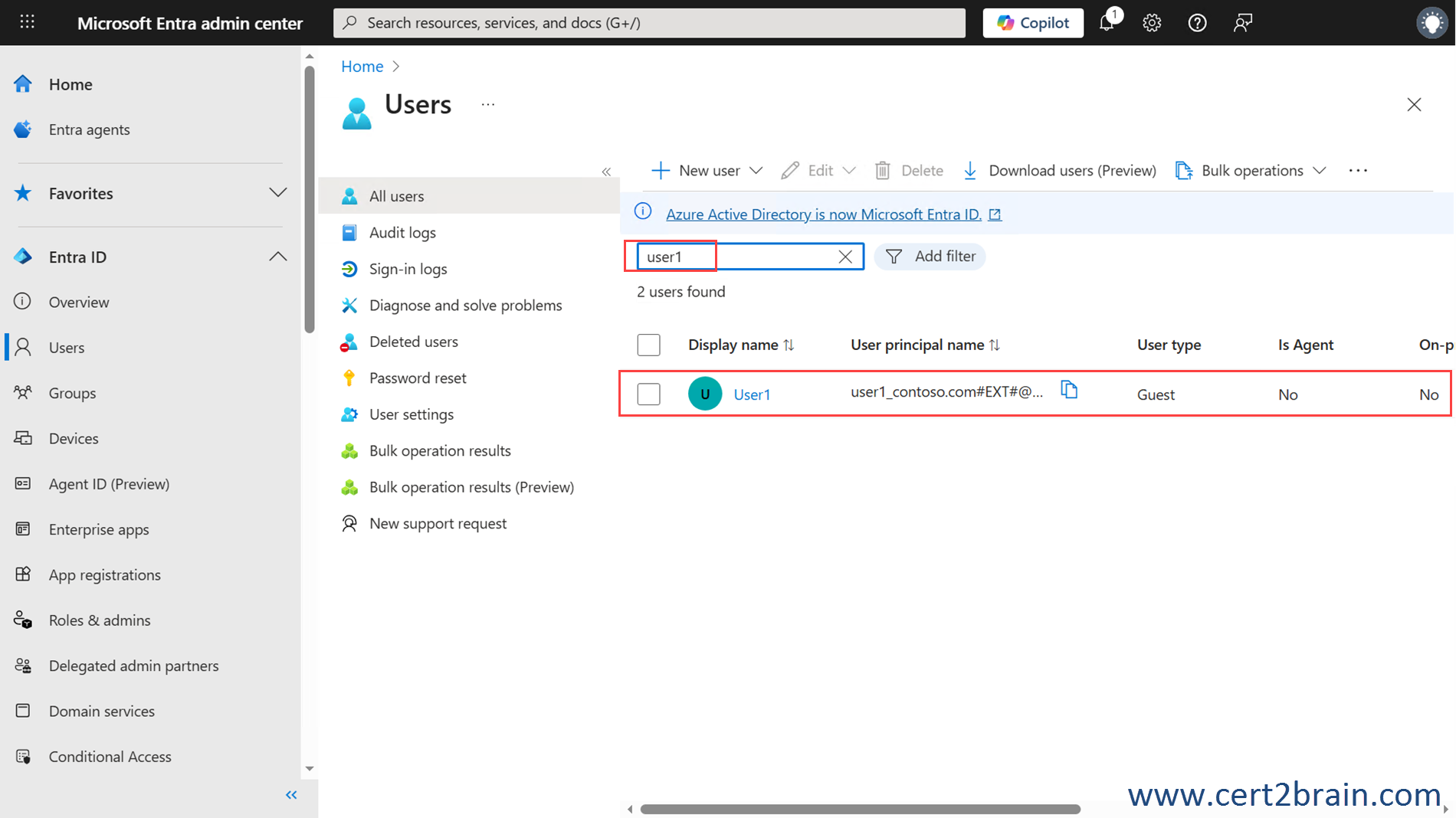
Reference: Quickstart: Add a guest user and send an invitation
Question: 486
Measured Skill: Implement and manage Microsoft Entra identity and access (25-30%)
Note: This is a lab or performance-based testing (PBT) question. To answer, you will perform a set of tasks in a live environment. Some functionality (e.g. copy and paste) will not be possible by design. The right mouse button may not be able to be used. Scoring is based on the outcome of performing the tasks stated in the lab. It doesn't matter how you accomplish the goal.
You need to modify the lockout duration of the Microsoft Entra tenant to 300 seconds for failed sign-in attempts.
To complete this task, sign in to the appropriate admin center.
(This question has to be solved in a lab environment. Click on Solution to see a valid example solution. Answer "True" if you can solve the problem, otherwise select "False".)Correct answer: ASolution:
We need to change the lockout duration from the password protection settings in the Microsoft Entra admin center.
Step 01: Sign in to the Microsoft Entra admin center (https://entra.microsoft.com). Browse to Entra ID > Authentication methods and select Password protection. Change the Lockout duration in seconds setting from 60 seconds to 300 seconds. Then click Save. The task is completed.
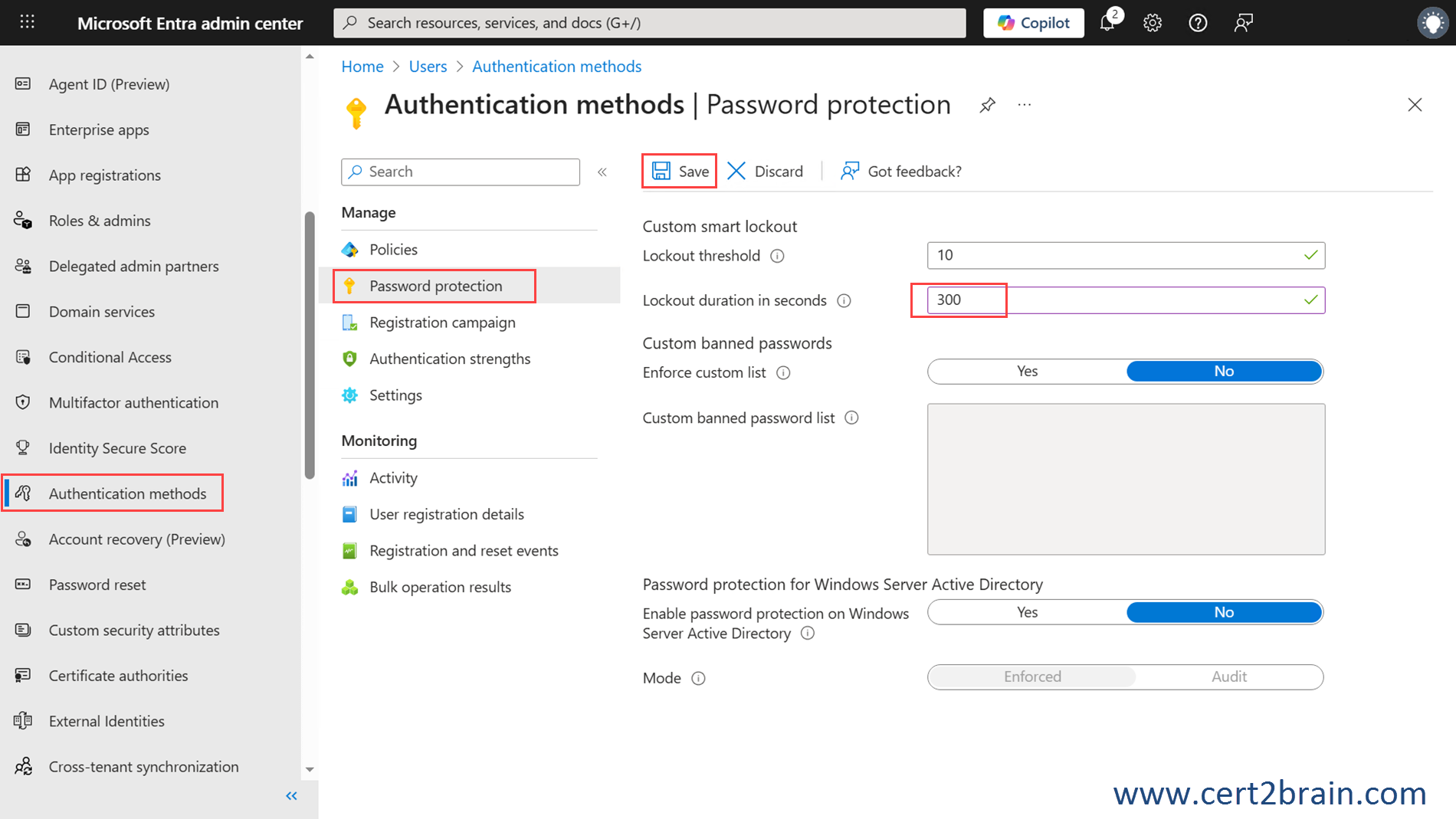
Reference: Protect user accounts from attacks with Microsoft Entra smart lockout
Question: 487
Measured Skill: Manage security and threats by using Microsoft Defender XDR (30–35%)
Note: This is a lab or performance-based testing (PBT) question. To answer, you will perform a set of tasks in a live environment. Some functionality (e.g. copy and paste) will not be possible by design. The right mouse button may not be able to be used. Scoring is based on the outcome of performing the tasks stated in the lab. It doesn't matter how you accomplish the goal.
You need to prevent a user named Adele Vance from sending more than 10 email messages per hour to external recipients.
To complete this task, sign in to the appropriate admin center.
(This question has to be solved in a lab environment. Click on Solution to see a valid example solution. Answer "True" if you can solve the problem, otherwise select "False".)Correct answer: ASolution:
We should configure an outbound spam filter policy for Adele Vance using the Microsoft Defender portal.
Step 01: Sign in to the Microsoft Defender portal (https://security.microsoft.com). Browse to Email & collaboration > Policies & rules. Click Threat policies. Then click Anti-spam. Expand + Create policy and click Outbound.
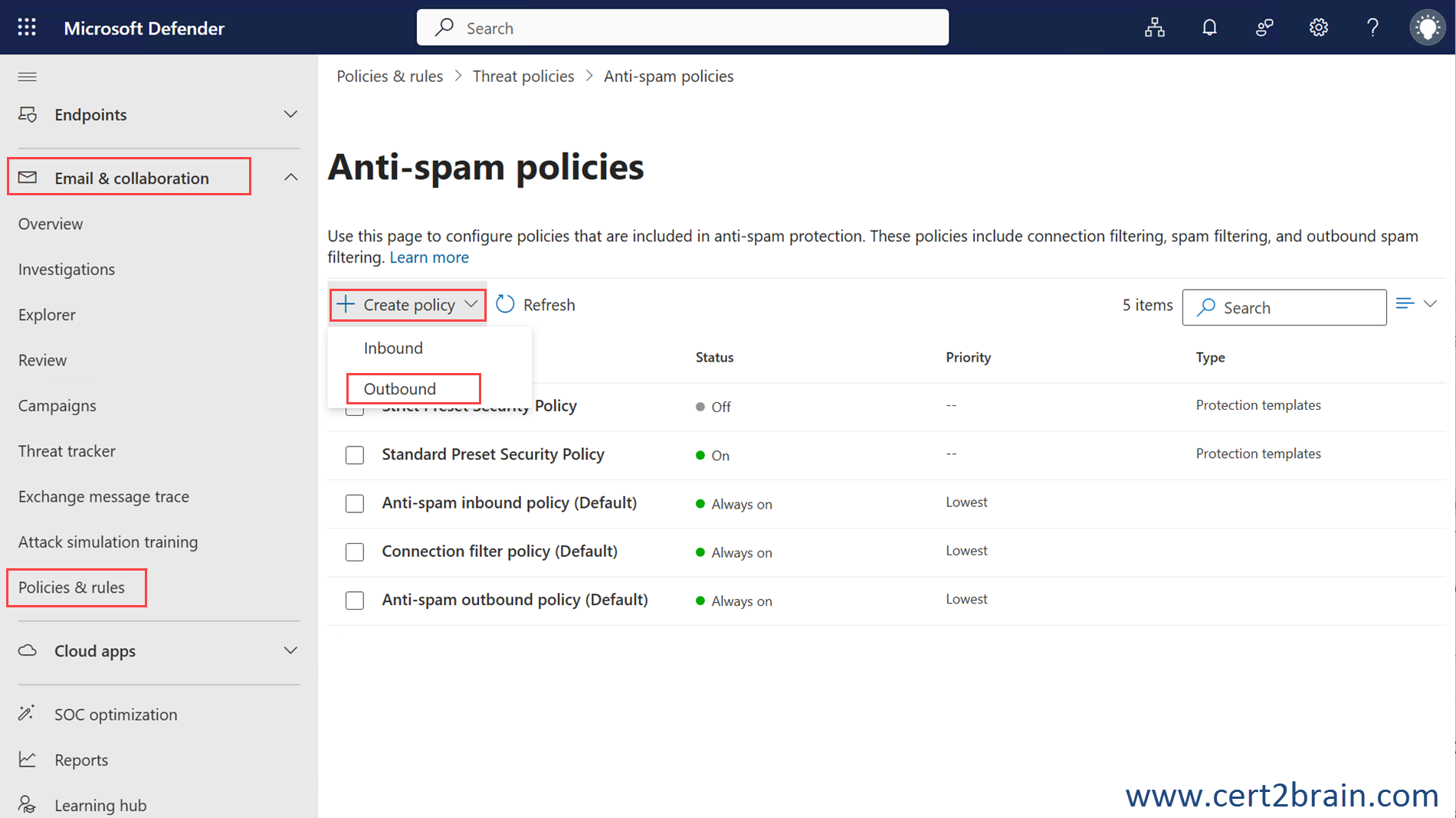
Step 02: Enter a name for the new policy. Then click Next.
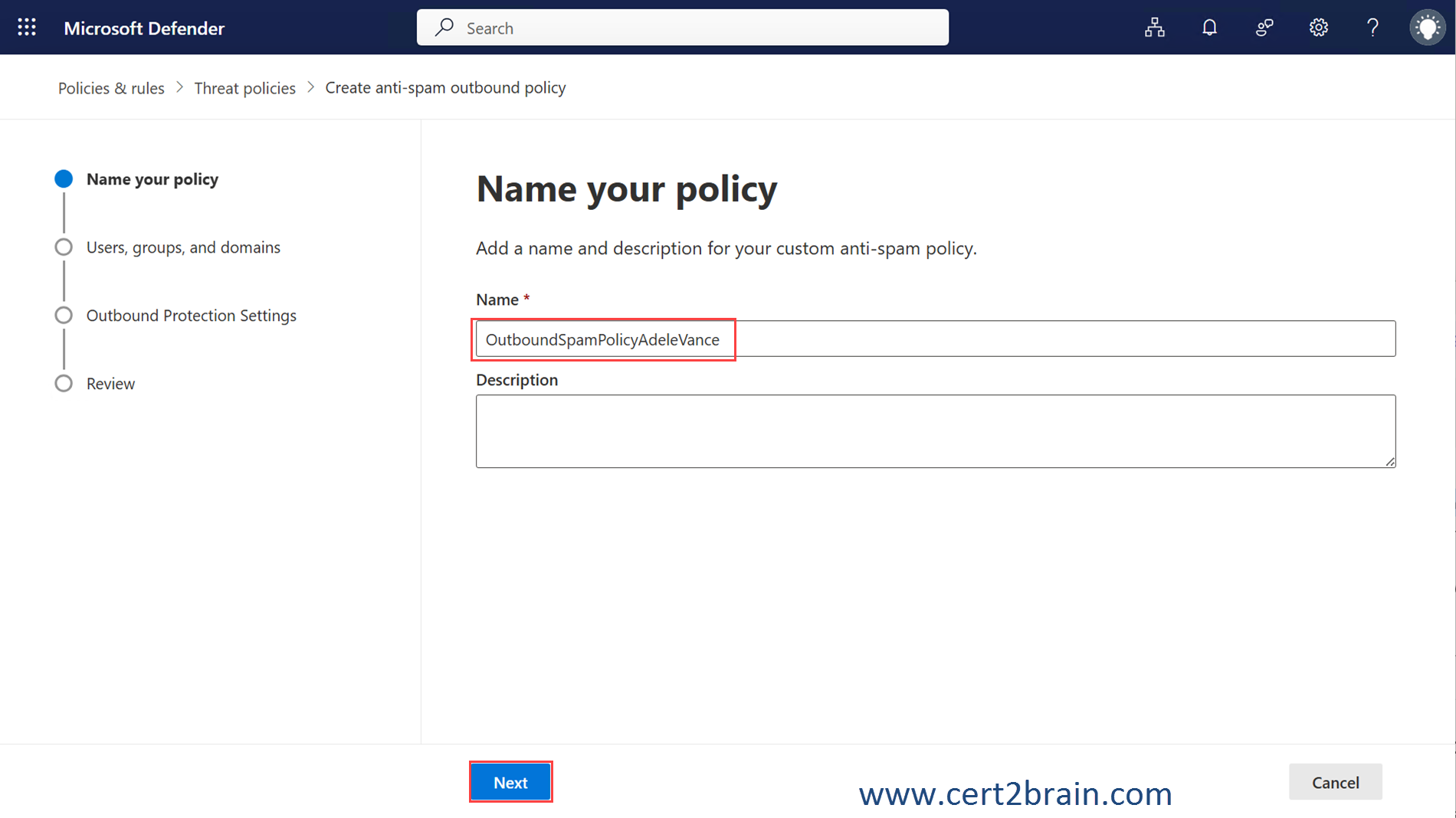
Step 03: Include Adele Vance. Then click Next.
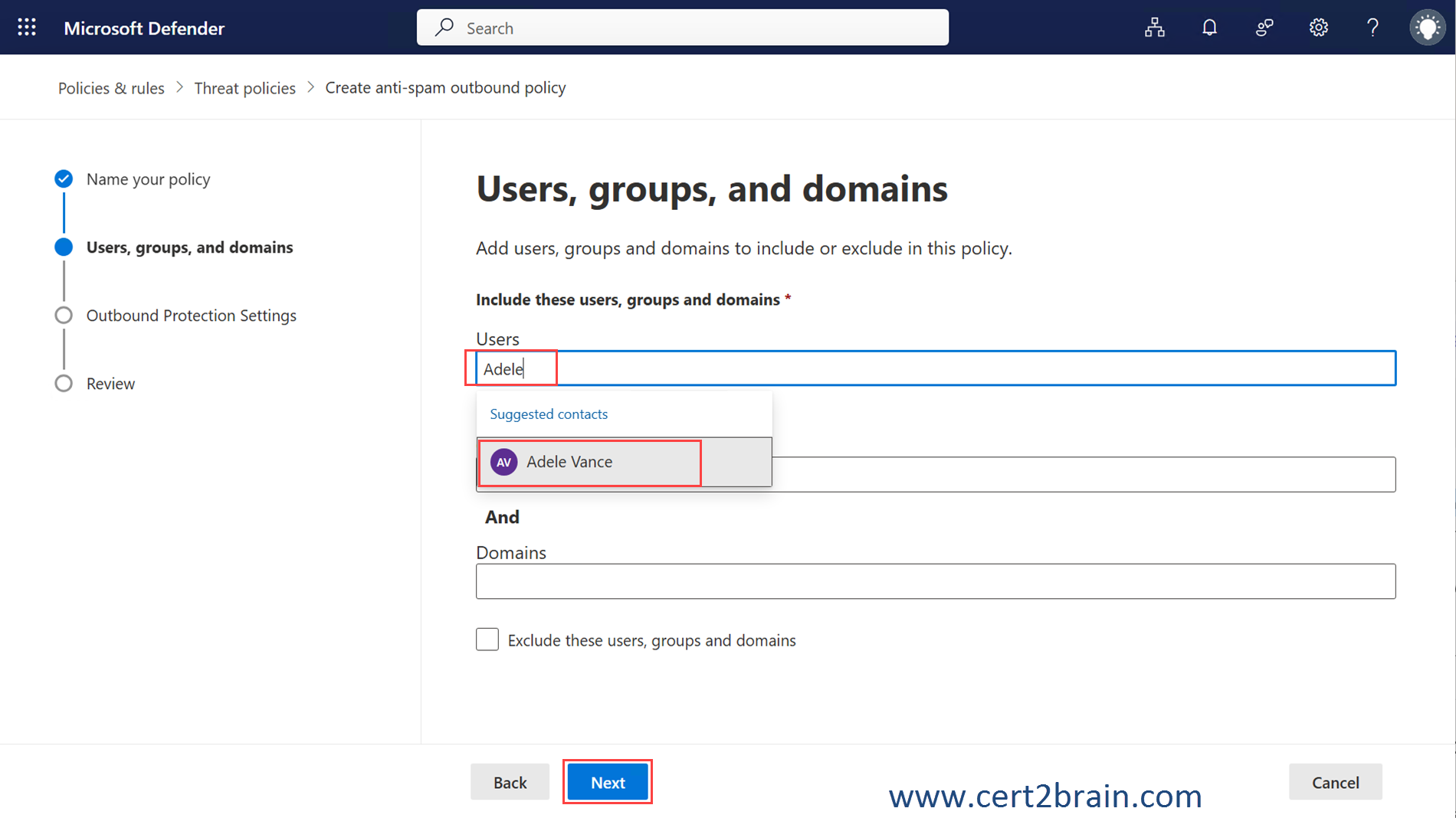
Step 04: Set "Set an external message limit" to 10. The setting specifies the maximum number of external recipients per hour. Then click Next.
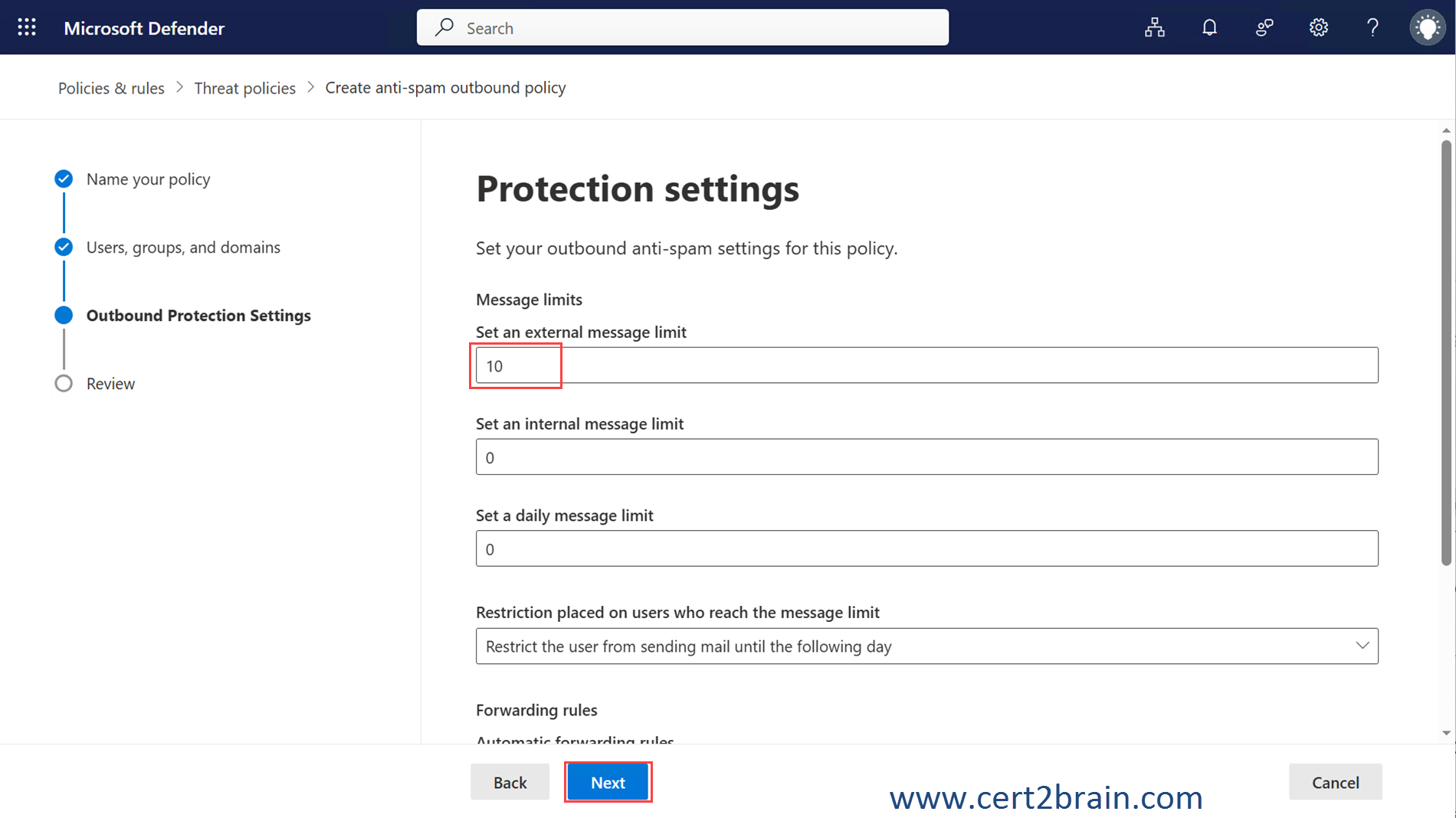
Step 05: Click Create to create the policy.

Step 06: The policy has been created successfully. Click Done. The task is completed.

Reference: Configure outbound spam policies for cloud mailboxes